Forums
- Forums
- Axis And Allies Forum
- General Discussion
- Aviation News
Aviation News
Post a reply
- Go to Previous topic
- Go to Next topic
- Go to Welcome
- Go to Introduce Yourself
- Go to General Discussion
- Go to Screenshots, Images and Videos
- Go to Off topic
- Go to Works in Progress
- Go to Skinning Tips / Tutorials
- Go to Skin Requests
- Go to IJAAF Library
- Go to Luftwaffe Library
- Go to RAF Library
- Go to USAAF / USN Library
- Go to Misc Library
- Go to The Ops Room
- Go to Made in Germany
- Go to Campaigns and Missions
- Go to Works in Progress
- Go to Juri's Air-Raid Shelter
- Go to Campaigns and Missions
- Go to Works in Progress
- Go to Skinpacks
- Go to External Projects Discussion
- Go to Books & Resources
-
 Main AdminAn FA-18A++ Hornet with Marine Fighter Attack Squadron(VMFA) 314, forward deployed to Marine Corps Air Station Iwakuni, Japan, arrives at Komatsu Air Base, Japan, for the Komatsu Aviation Training Relocation exercise March 7, 2016. VMFA-314 will conduct dissimilar air combat training and bilateral tactical mission training with the Japan Air Self-Defense Force during the ATR. Not only does this training mission increase the squadron?s readiness in air-to-air mission sets and executes flight leadership qualification upgrades, it supports theater security cooperation and combined interoperability with the JASDF. (U.S. Marine Corps photo's by Cpl. Nicole Zurbrugg/Released)
Main AdminAn FA-18A++ Hornet with Marine Fighter Attack Squadron(VMFA) 314, forward deployed to Marine Corps Air Station Iwakuni, Japan, arrives at Komatsu Air Base, Japan, for the Komatsu Aviation Training Relocation exercise March 7, 2016. VMFA-314 will conduct dissimilar air combat training and bilateral tactical mission training with the Japan Air Self-Defense Force during the ATR. Not only does this training mission increase the squadron?s readiness in air-to-air mission sets and executes flight leadership qualification upgrades, it supports theater security cooperation and combined interoperability with the JASDF. (U.S. Marine Corps photo's by Cpl. Nicole Zurbrugg/Released)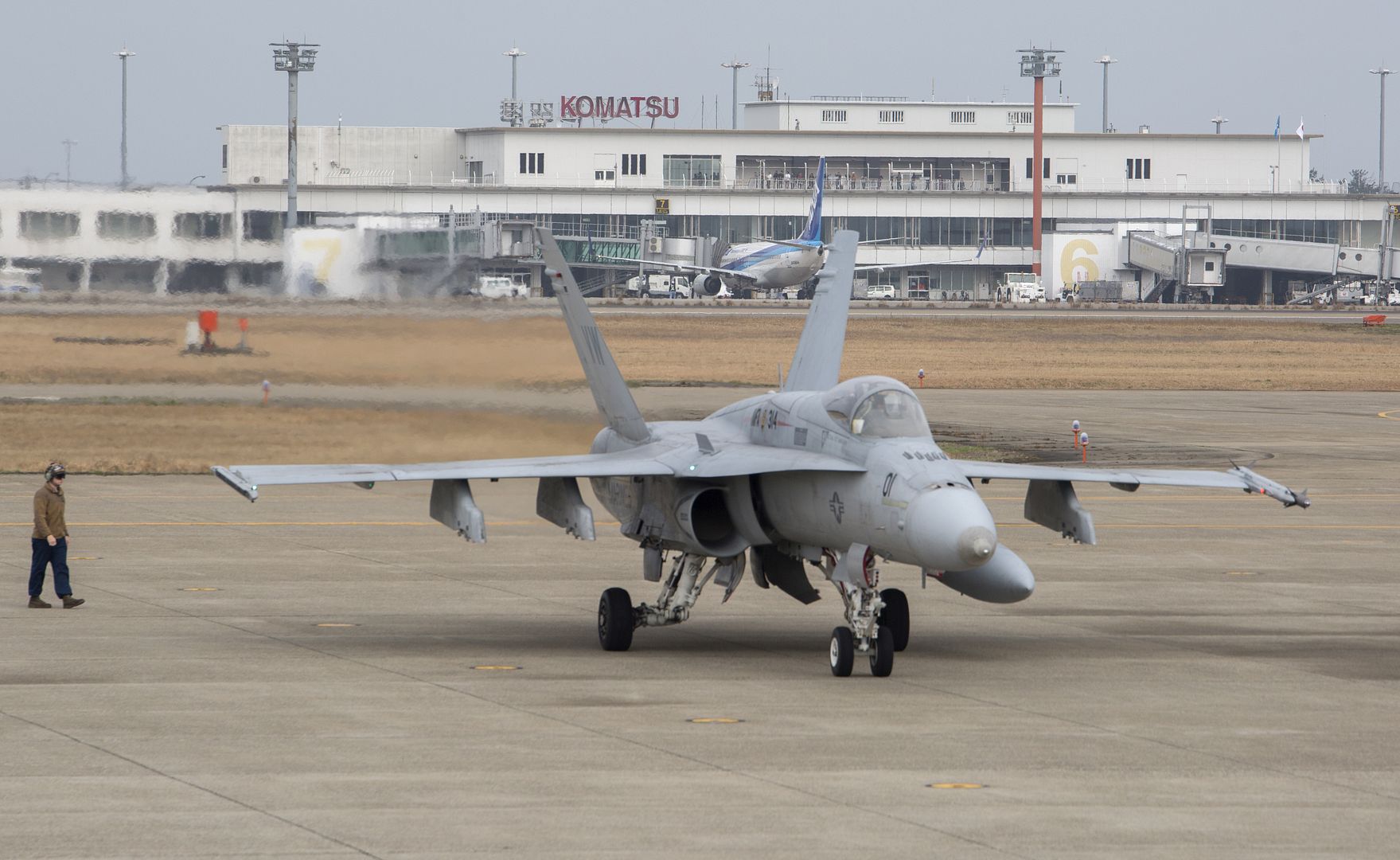
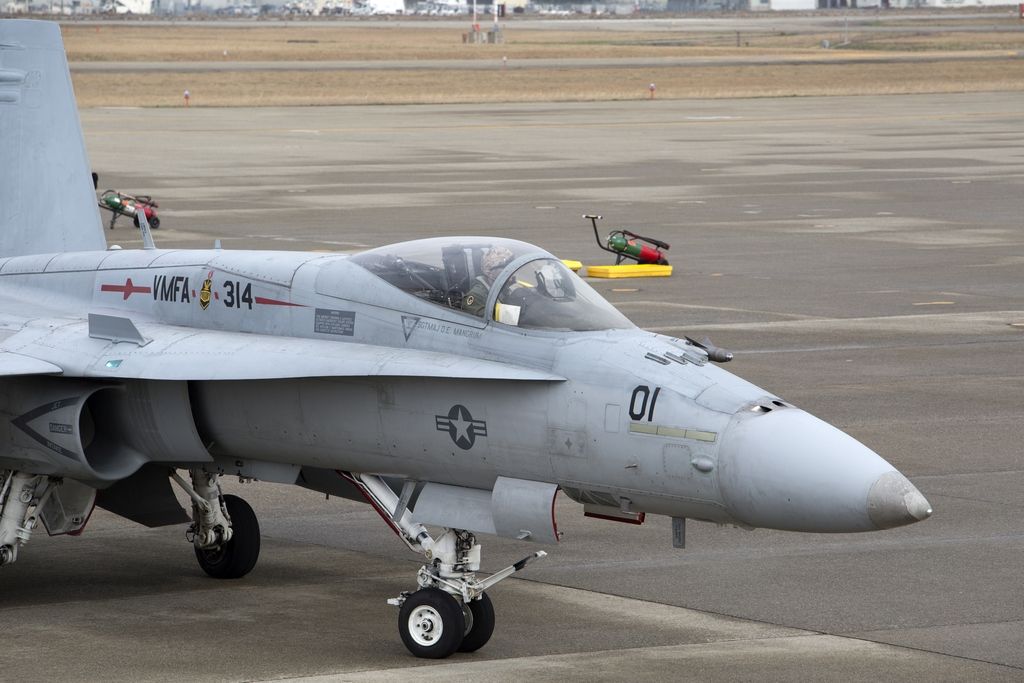
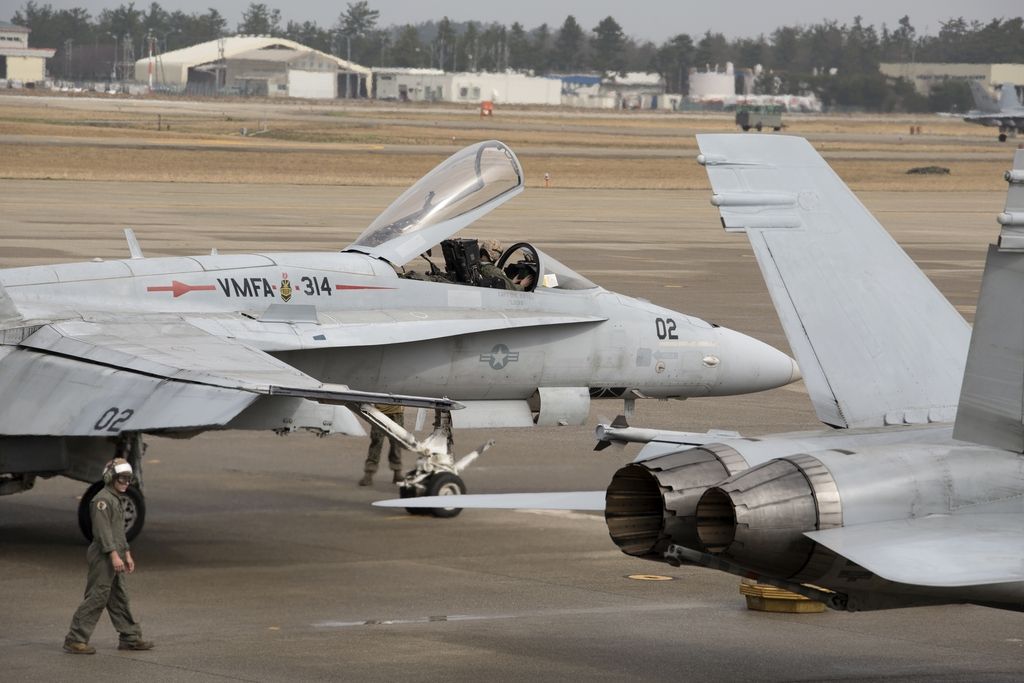
An F-16 Fighting Falcon assigned to the 36th Fighter Squadron taxis before taking off March 7, 2016, at Osan Air Base, Republic of Korea. Members of the 36th Aircraft Maintenance Unit generated multiple aircraft throughout the day in preparation for combat readiness exercise Beverly Midnight 16-01. (U.S. Air Force photo by Staff Sgt. Benjamin Sutton/Released)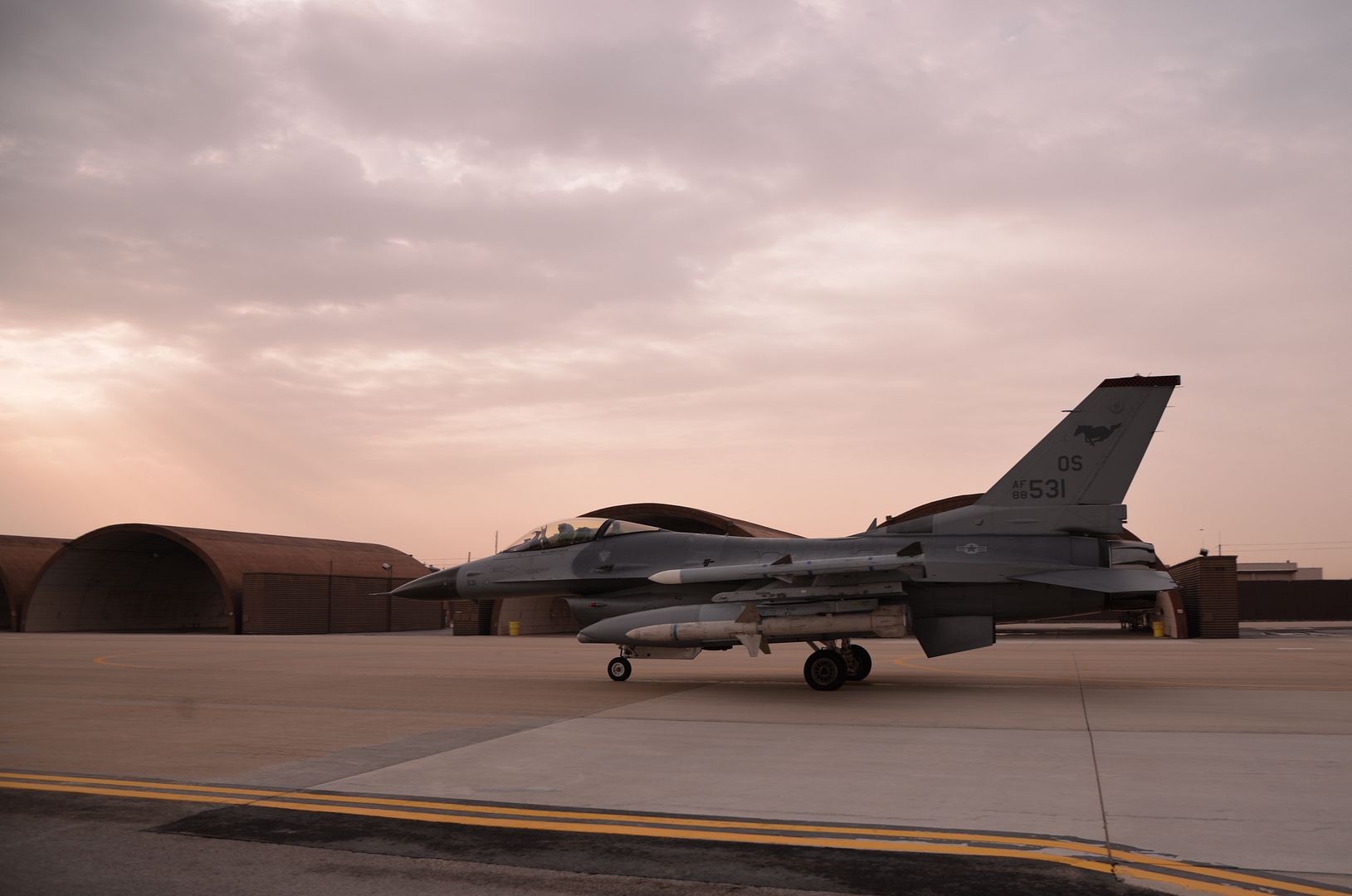
An F-16 Fighting Falcon assigned to the 36th Fighter Squadron takes off prior to the start of readiness exercise Beverly Midnight 16-01 from Osan Air Base, Republic of Korea March 7, 2016. Team Osan is participating in combat exercise Beverly Midnight 16-01 which is designed to test American forces in the ROK on their mission readiness in the event of an emergency or wartime environment. (U.S. Air Force photo by Staff Sgt. Benjamin Sutton/Released)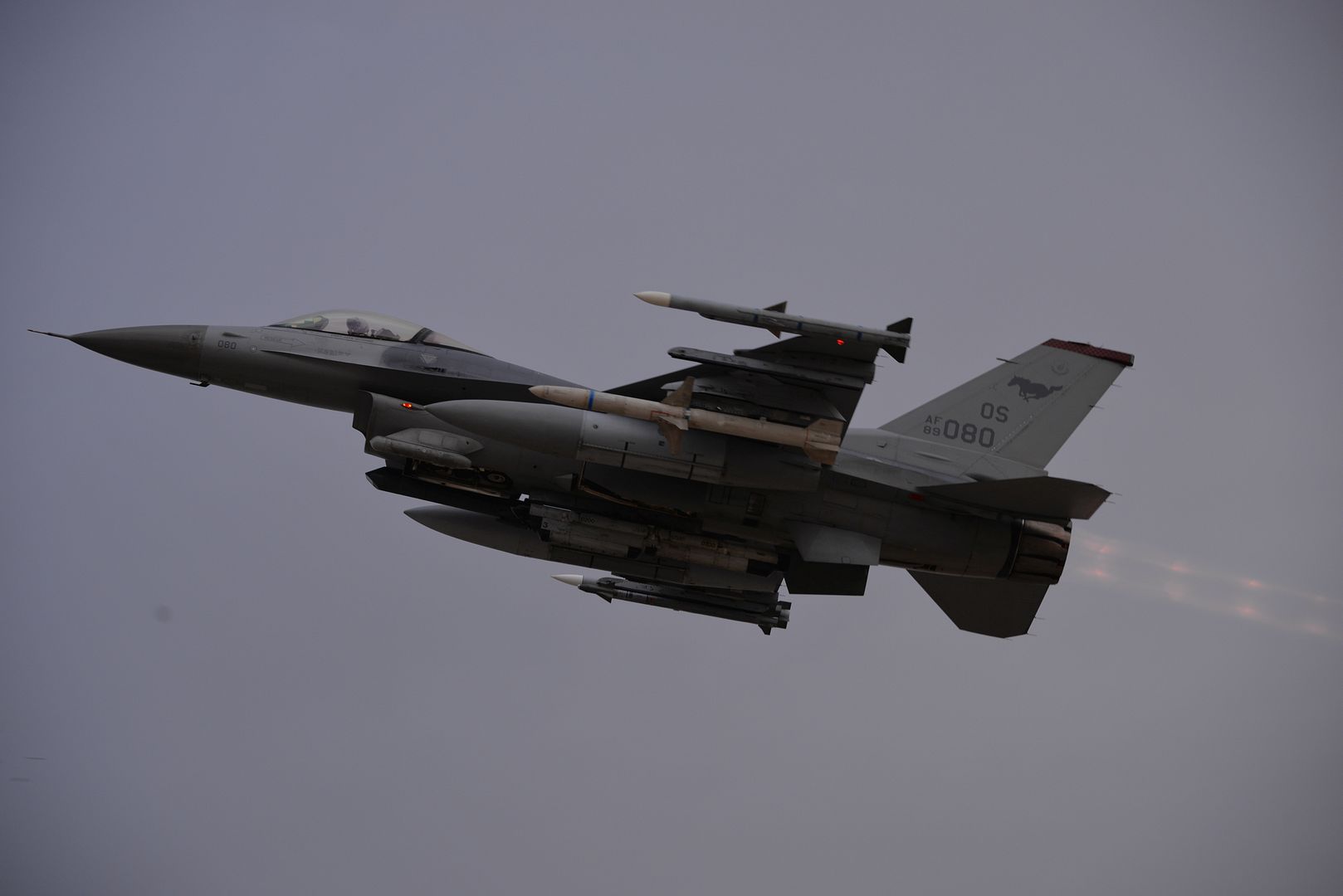
PHILIPPINE SEA (March 7, 2016) - An F/A-18E Super Hornet flown by Cmdr. Douglas Peterson prepares to break formation, turning over the Warhawks of Strike Fighter Squadron (VFA) 97 to Cmdr. Matthew Doyle during an aerial change of command ceremony above USS John C. Stennis (CVN 74). Providing a ready force supporting security and stability in the Indo-Asia-Pacific, Stennis is operating as part of the Great Green Fleet on a regularly scheduled 7th Fleet deployment. (U.S. Navy photo by Mass Communication Specialist Seaman Tomas Compian/ Released)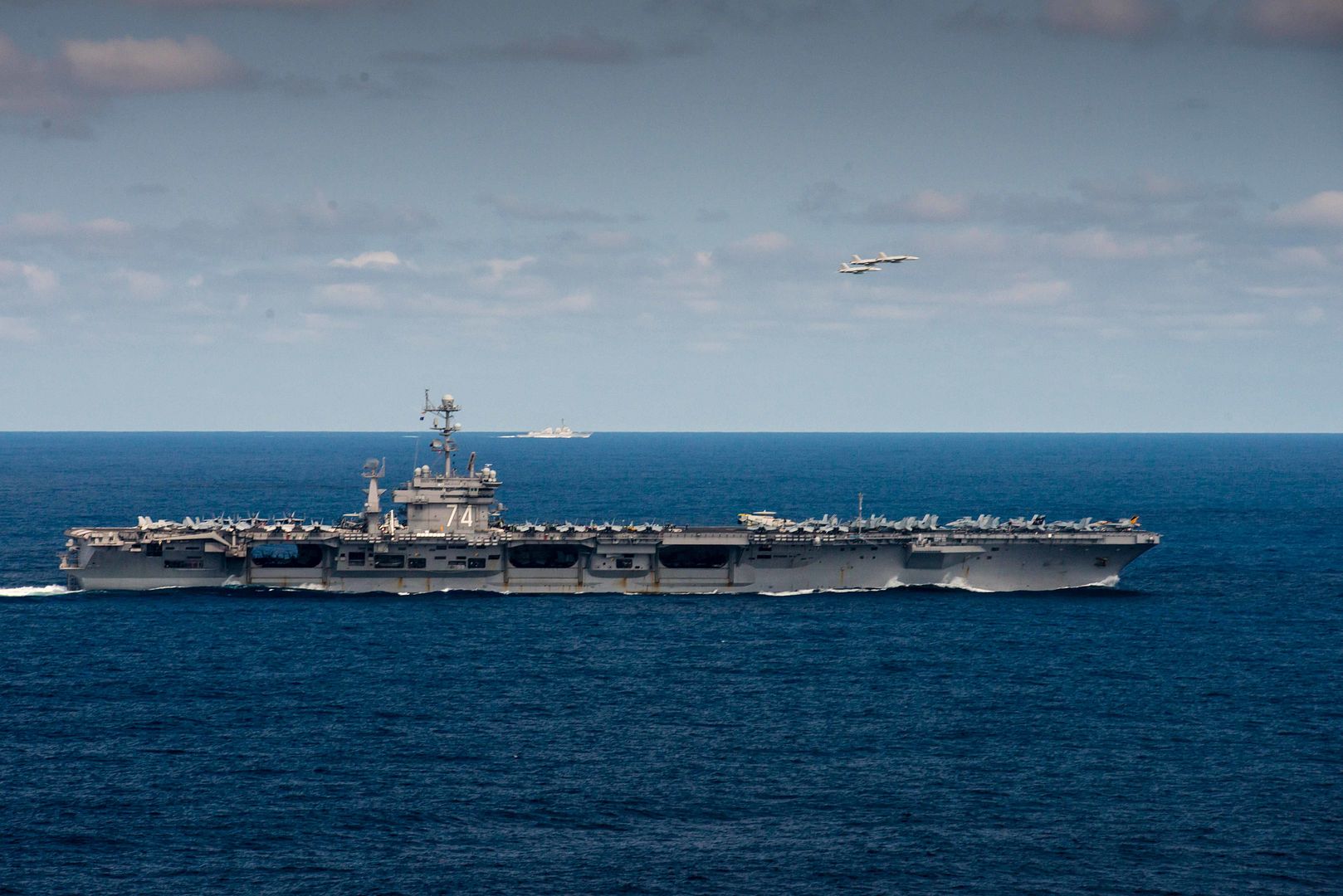
PHILIPPINE SEA (March 7, 2016) - Three F/A-18E Super Hornets assigned to the Warhawks of Strike Fighter Squadron (VFA) 97 fly in formation for an aerial change of command ceremony as Cmdr. Douglas Peterson is relieved by Cmdr. Matthew Doyle. Providing a ready force supporting security and stability in the Indo-Asia-Pacific, Stennis is operating as part of the Great Green Fleet on a regularly scheduled 7th Fleet deployment. (U.S. Navy photo by Mass Communication Specialist 3rd Class Kenneth Rodriguez Santiago / Released)
PHILIPPINE SEA (March 7, 2016) - An F/A-18E Super Hornet assigned to the Warhawks of Strike Fighter Squadron (VFA) 97 flies over USS John C. Stennis (CVN 74). Providing a ready force supporting security and stability in the Indo-Asia-Pacific, Stennis is operating as part of the Great Green Fleet on a regularly scheduled 7th Fleet deployment. (U.S. Navy photo by Mass Communication Specialist 3rd Class Kenneth Rodriguez Santiago / Released)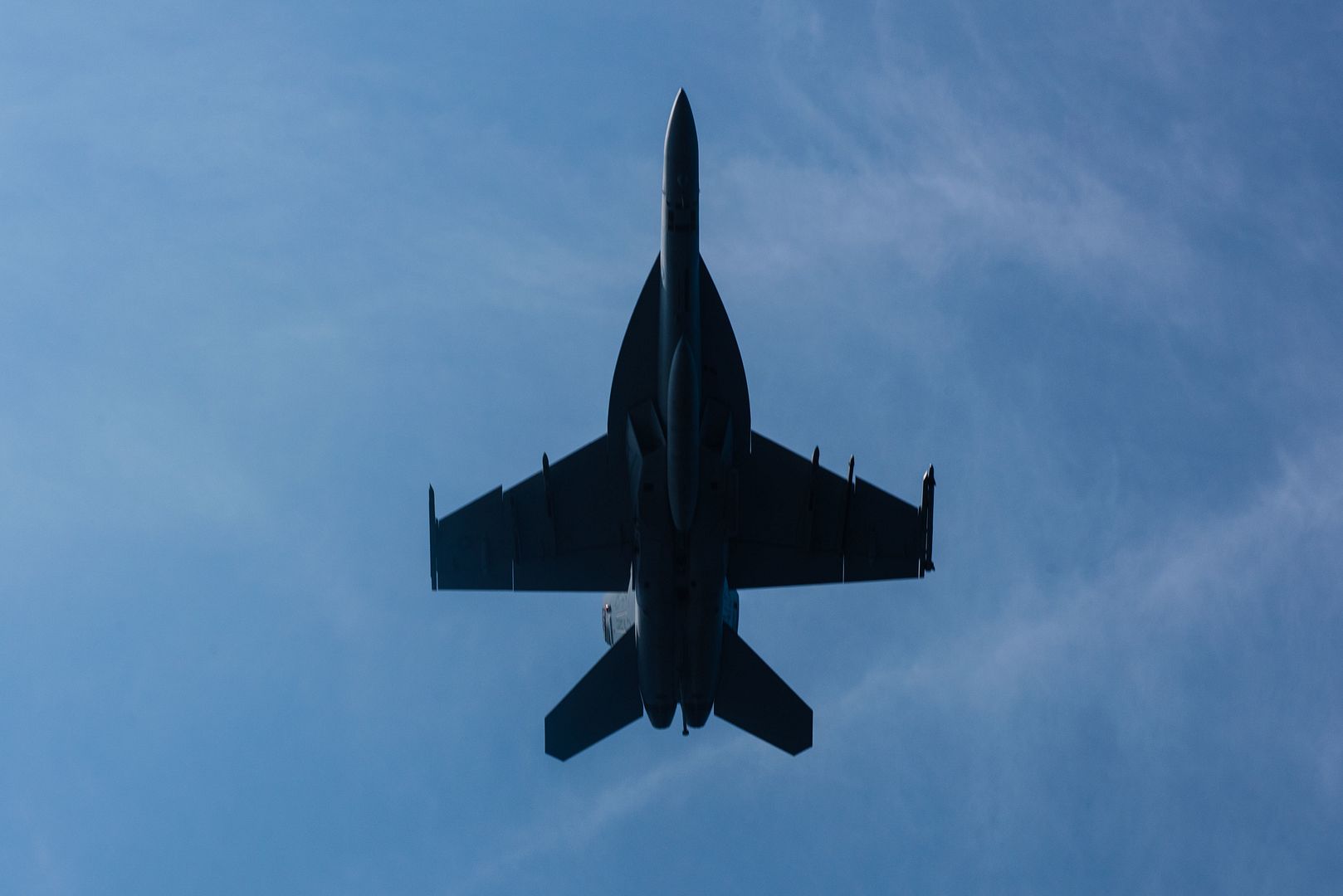
PHILIPPINE SEA (March 7, 2016) - An F/A-18E Super Hornet assigned to the Warhawks of Strike Fighter Squadron (VFA) 97 lands on USS John C. Stennis' (CVN 74) flight deck. Providing a ready force supporting security and stability in the Indo-Asia-Pacific, Stennis is operating as part of the Great Green Fleet on a regularly scheduled 7th Fleet deployment. (U.S. Navy photo by Mass Communication Specialist 3rd Class Kenneth Rodriguez Santiago / Released)
-
 Main AdminA member from Canadian Forces Base Bagotville guides a CF-188 Hornet aircraft in Constanta Romania during Exercise RESILIENT RESOLVE on March 7 2016.
Main AdminA member from Canadian Forces Base Bagotville guides a CF-188 Hornet aircraft in Constanta Romania during Exercise RESILIENT RESOLVE on March 7 2016.
Photo: Cpl Eric Girard, Canadian Forces Combat Camera.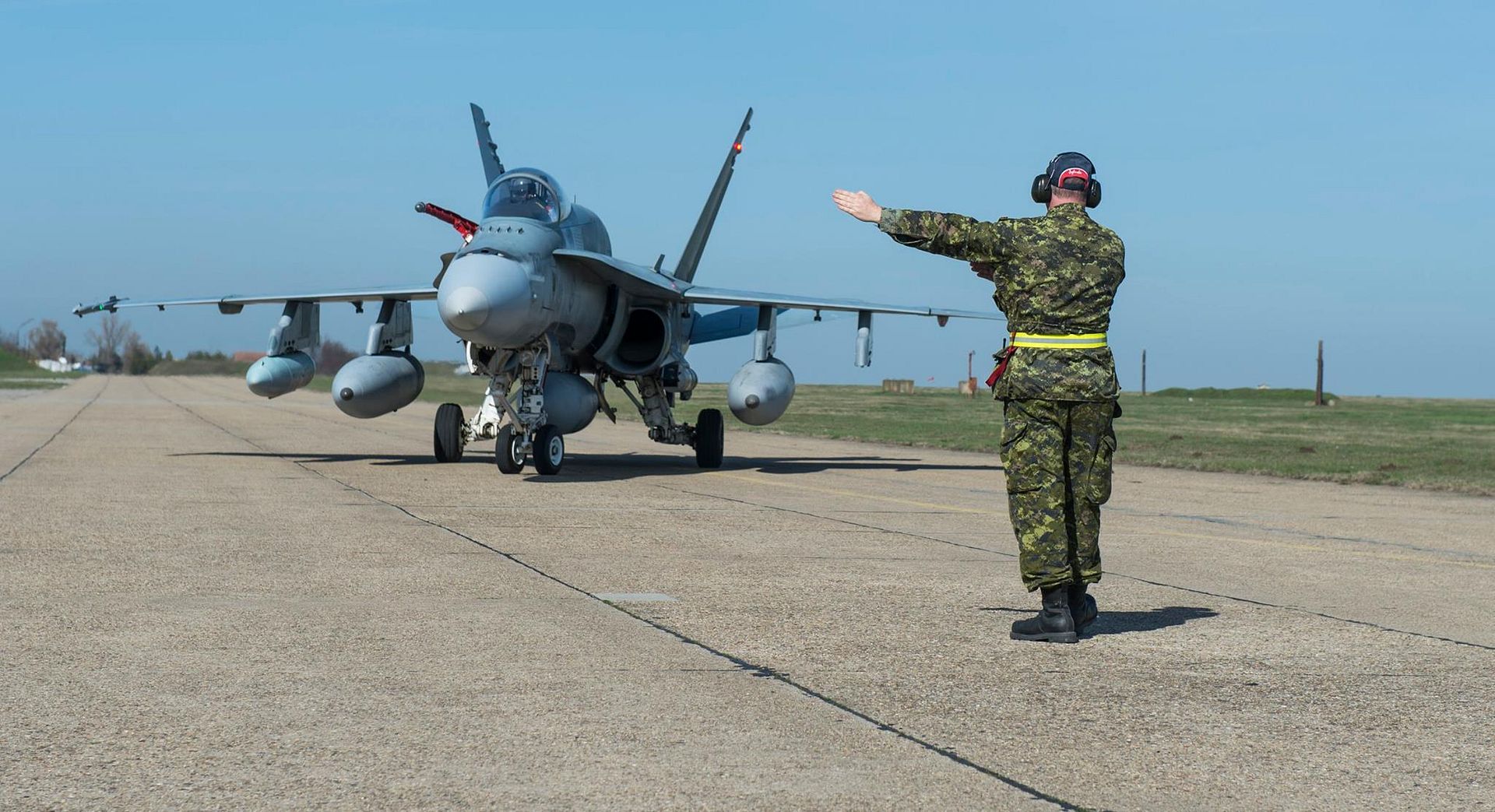
Three U.S. Marine Corps MV-22B Osprey aircraft, flown by Marine Medium Tiltrotor Squadron 263, Special Purpose Marine Air Ground Task Force, with personnel from the U.S. Army 1st Battalion, 503rd Infantry Regiment, 173rd Airborne Brigade and soldiers from the Spanish Armed Forces Airborne Brigade (BRIPAC), take off after an air assault during the Exercise Sky Soldier 16, Feb. 27, 2016, at Chinchilla training area in Spain. The training objective of Exercise Sky Soldier 16 is to enhance the brigade?s 1st Battalion, 503rd Infantry Regiment readiness for multinational contingency operations and capabilities to conduct future missions with NATO Allies and partners. The 173rd Airborne Brigade is the U.S. Army?s Contingency Response Force in Europe, providing rapidly deploying forces to the U.S. Army Europe, Africa and Central Command Areas of Responsibility within 18 hours. The Brigade routinely trains alongside NATO allies and partners to build stronger relationships and strengthen the alliance. (photo by Elena Baladelli/released)
PHILIPPINE SEA (March 7, 2016) - An MH-60R Sea Hawk assigned to the Raptors of Helicopter Maritime Strike Squadron (HSM) 71 lowers a dipping sonar into the water next to USS John C. Stennis (CVN 74) during an air power demonstration. Providing a ready force supporting security and stability in the Indo-Asia-Pacific, Stennis is operating as part of the Great Green Fleet on a regularly scheduled 7th Fleet deployment. (U.S. Navy photo by Mass Communication Specialist 3rd Class Kenneth Rodriguez Santiago / Released)
PHILIPPINE SEA (March 7, 2016) - F/A-18E Super Hornets assigned to the Vigilantes of Strike Fighter Squadron (VFA) 151 and the Tophatters of Strike Fighter Squadron (VFA) 14 perform an aerial refueling during an air power demonstration over USS John C. Stennis (CVN 74). Providing a ready force supporting security and stability in the Indo-Asia-Pacific, Stennis is operating as part of the Great Green Fleet on a regularly scheduled 7th Fleet deployment. (U.S. Navy photo by Mass Communication Specialist 3rd Class Kenneth Rodriguez Santiago / Released)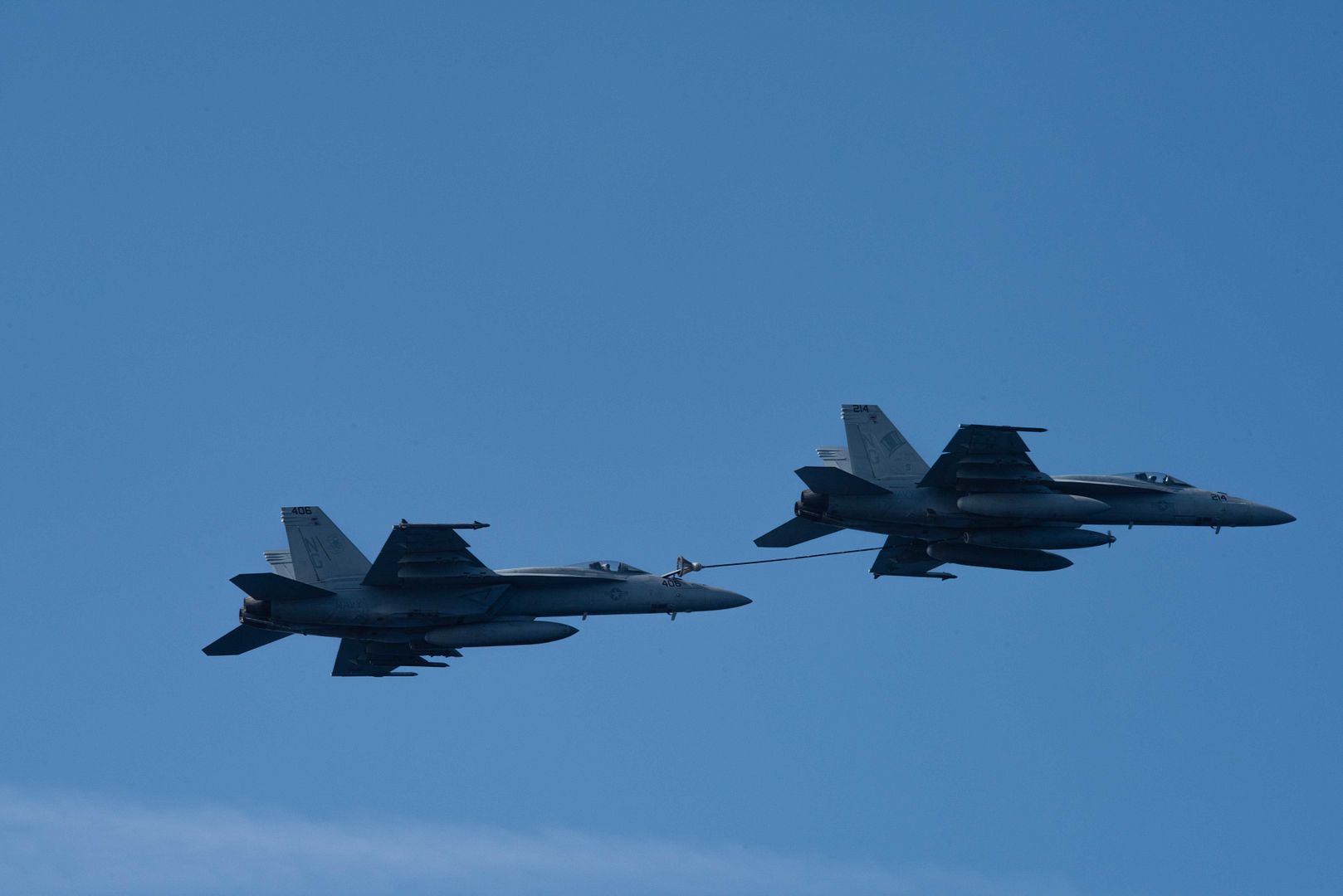
PHILIPPINE SEA (March 7, 2016) - An F/A-18E Super Hornet assigned to the Vigilantes of Strike Fighter Squadron (VFA) 151 flies over USS John C. Stennis (CVN 74) during an air power demonstration. Providing a ready force supporting security and stability in the Indo-Asia-Pacific, Stennis is operating as part of the Great Green Fleet on a regularly scheduled 7th Fleet deployment. (U.S. Navy photo by Mass Communication Specialist 3rd Class Kenneth Rodriguez Santiago / Released)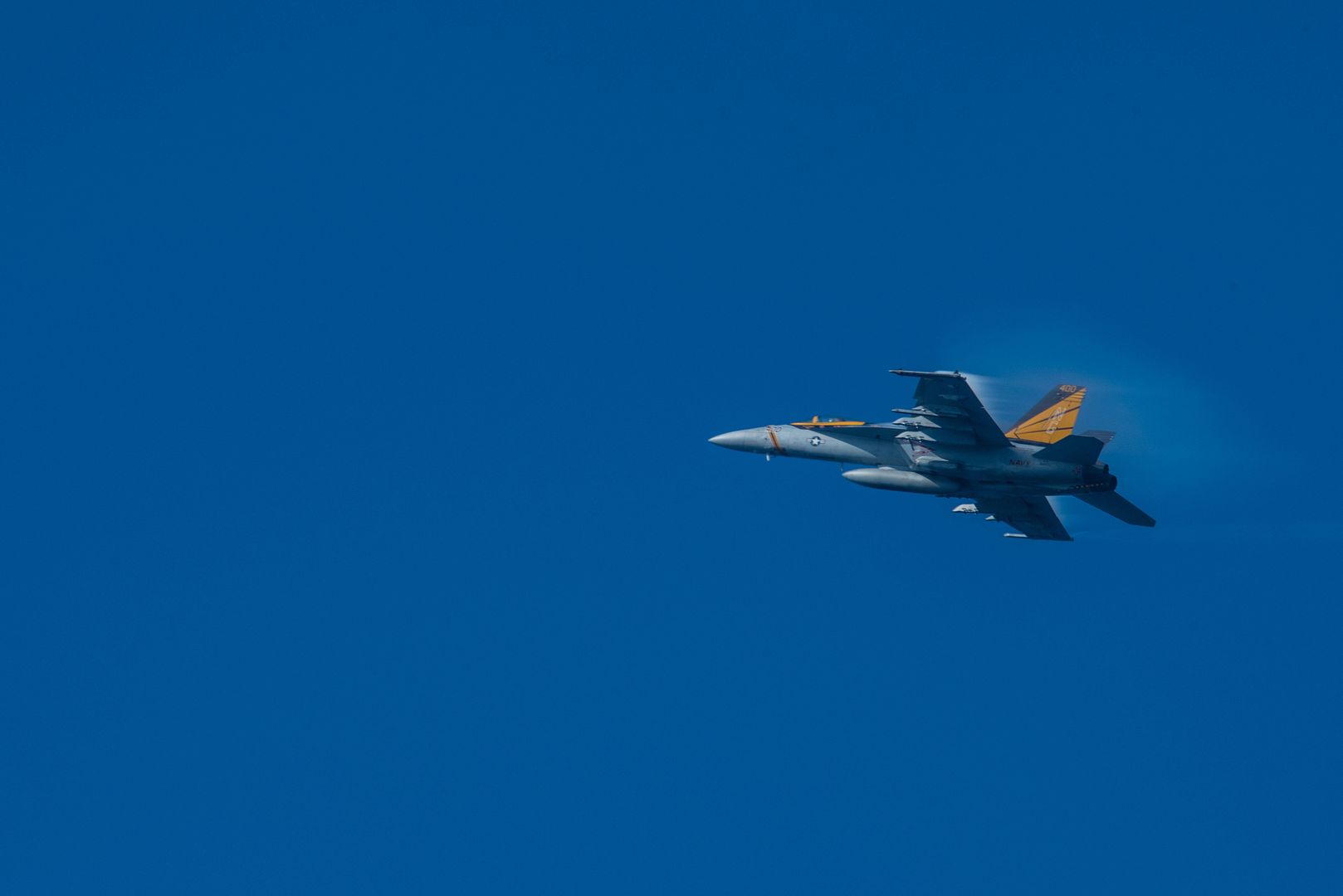
PHILIPPINE SEA (March 7, 2016) - An E-2C Hawkeye assigned to the Golden Hawks of Airborne Early Warning Squadron (VAW) 112 flies over USS John C. Stennis (CVN 74) during an air power demonstration. Providing a ready force supporting security and stability in the Indo-Asia-Pacific, Stennis is operating as part of the Great Green Fleet on a regularly scheduled 7th Fleet deployment. (U.S. Navy photo by Mass Communication Specialist 3rd Class Kenneth Rodriguez Santiago / Released)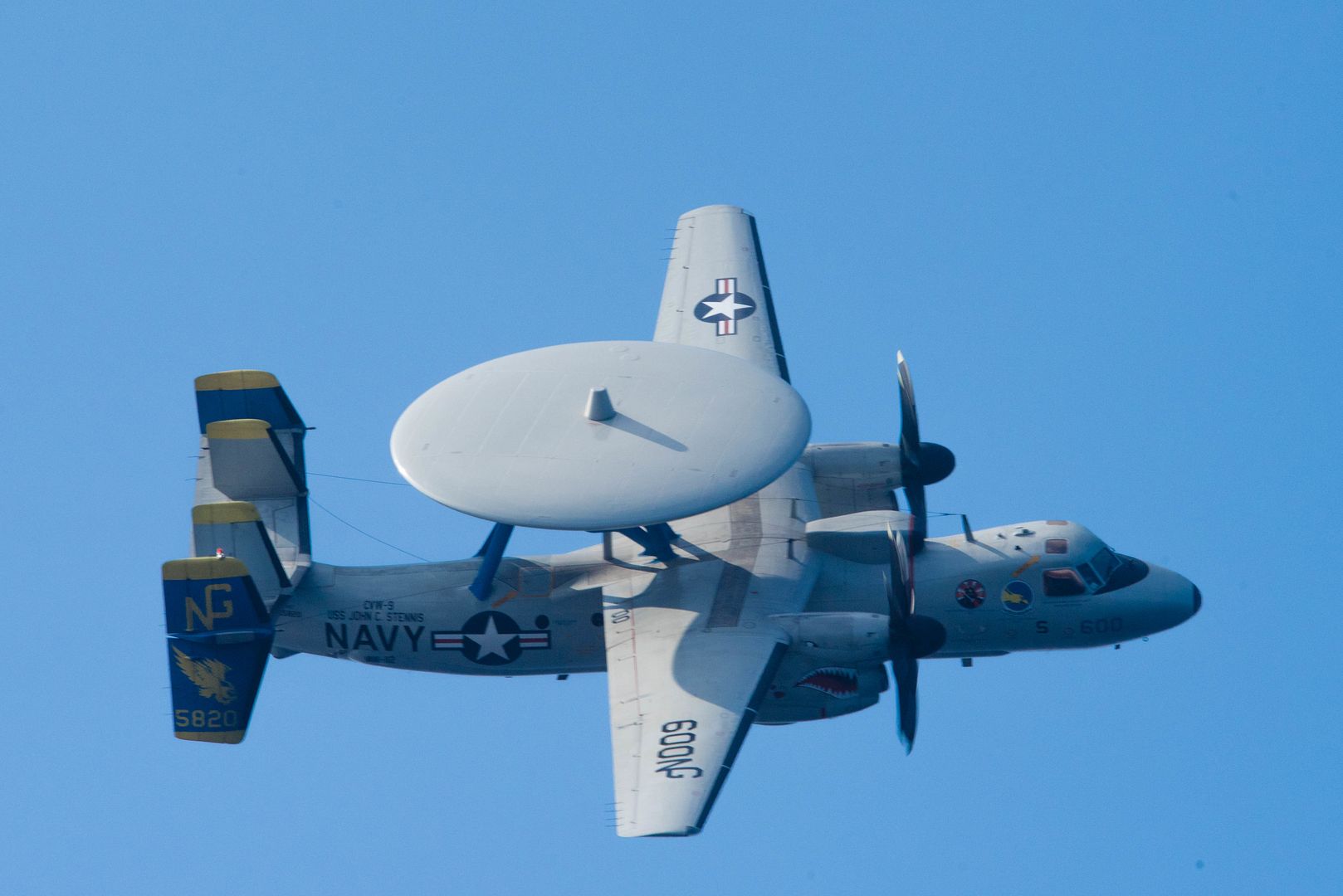
A U.S. Air Force C-17 Globemaster III from the 517th Airlift Squadron lands at Bryant Army Air Field on Joint Base Elmendorf-Richardson, Alaska, March 7, 2016. The event marked the first time a C-17 has taken off from the airfield since its construction in 1958, when the runway was built by the U.S. Army on then-separate Ft. Richardson to support Soldiers in remote areas of Alaska. (U.S. Air Force photo by Senior Airman James Richardson)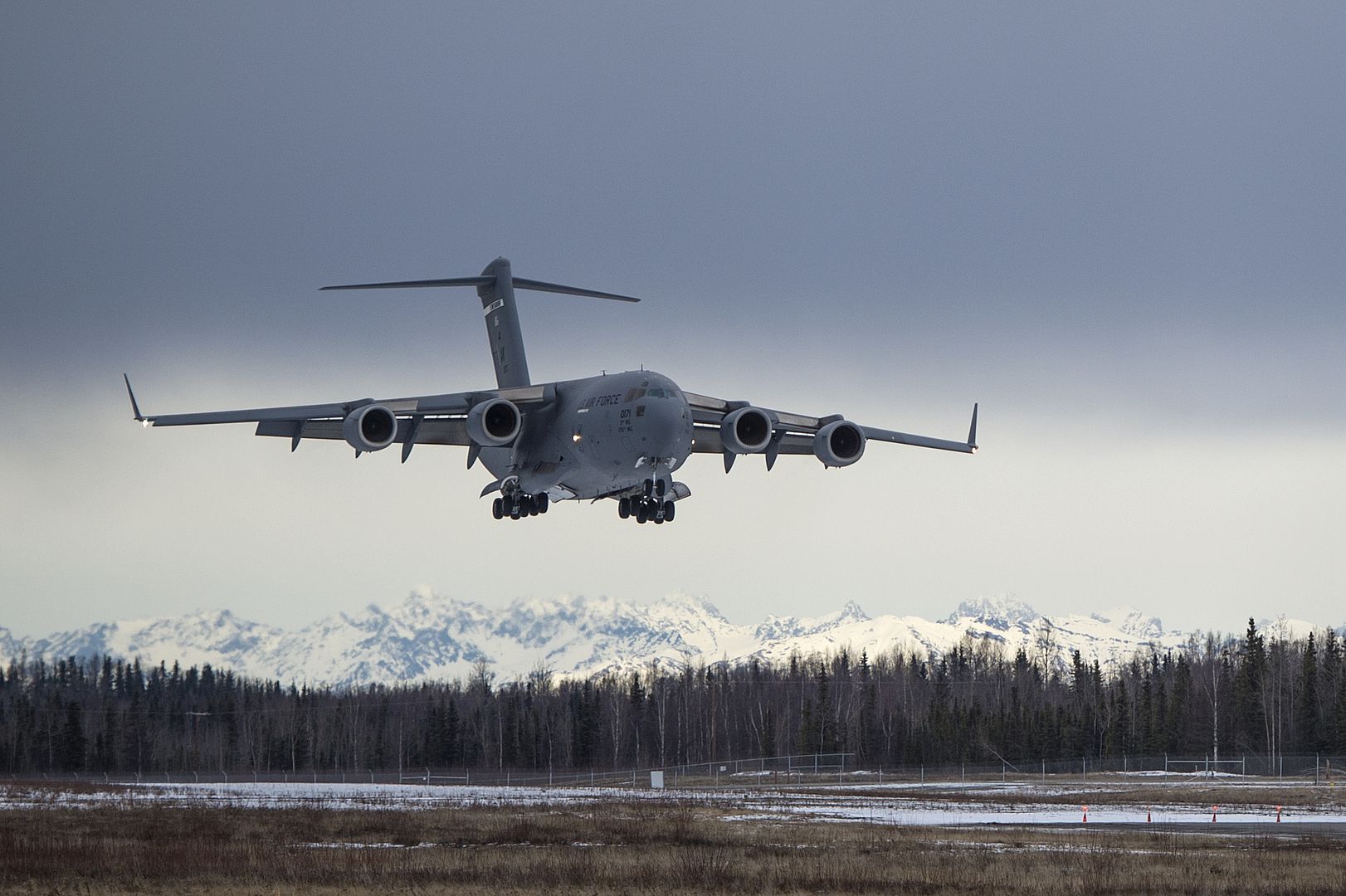
MOR?N AIR BASE, Spain (AFNS) -- U.S. Air Force B-52 Stratofortresses joined French aircraft and ground troops from a dozen nations to kick off a close air support exercise in the Mediterranean March 7.
Serpentex, an annual French-led exercise, involves joint terminal attack controllers from 12 partner countries. Operating on the French island of Corsica, the JTACs work together to practice properly identifying targets and using that data to call in air strikes from nearby French and American aircraft.
"Serpentex is a great opportunity to have all the JTACs from coalition nations in one place, training together to increase interoperability and work on communication skills," said Maj. Sarah Fortin, the 20th Expeditionary Bomb Squadron assistant director of operations. "It gives them a chance to train and get smart on what they have to do and what their capabilities are, so later on down the road when it counts, they can perform effectively and efficiently."
Serpentex differs from other joint-military exercises in the region as it concentrates solely on close air support. This critical capability puts the power of precise, concentrated air strikes in the hands of troops on the ground, who can call these strikes in to defend themselves against enemy attacks or to eliminate vital targets with lethal accuracy.
This is the first year B-52s have been invited to participate in the exercise, as the role of close air support has traditionally been filled by various fighter platforms. The Stratofortress is well-suited for this application, however, as it can loiter for extended periods and carries a wider range of munitions than any other aircraft in the U.S. inventory.
During the exercise, the B-52s joined with French fighters to support JTACs from several NATO nations, as well as those from Jordan and Saudi Arabia, who are also participating this year. Training with a wide range of mission partners ensures a more comprehensive learning experience, Fortin explained.
"Working alongside our coalition partners out there will be a great experience for everybody," Fortin said. "Most of them haven't worked with bombers for these types of missions before. We have a longer duration and a lot wider turn radius than some of the fighters, so they're going to have to find a new pacing for calling us in for close air support. But I promise that bomber CAS is worth the wait."
The B-52s involved in Serpentex also participated in the Norwegian-led Cold Response 16, a large-scale NATO military training exercise in the Tr?ndelag region of Norway involving 16,000 troops and comprising air, ground and maritime operations. The bombers will be participating in both exercises simultaneously for a short time as Cold Response winds down. Temporarily stationing the aircraft in Europe allowed for more sorties, shorter flight times, less fuel burned and more training hours.
"The ability to train bomber aircrews in different geographic combatant commands is essential to maintaining a strong, credible bomber force that enhances the security and stability of our allies and partners," said Lt. Col. Dennis Cummings, the 20th Expeditionary Bomb Squadron commander. "Our ability to smoothly and effectively conduct these multinational missions is heavily indebted to the hospitality of Spain and fantastic support we are receiving from U.S. Air Forces (in) Europe."
A French Mirage 2000 holds station off the wing of a U.S. Air Force B-52 Stratofortress in the skies over northern France March 1, 2016. Several B-52s participated in French-led close air support exercise Serpentex for the first time this year, joining forces from a dozen nations to train and develop better tactics, techniques and procedures. (U.S. Air Force courtesy photo)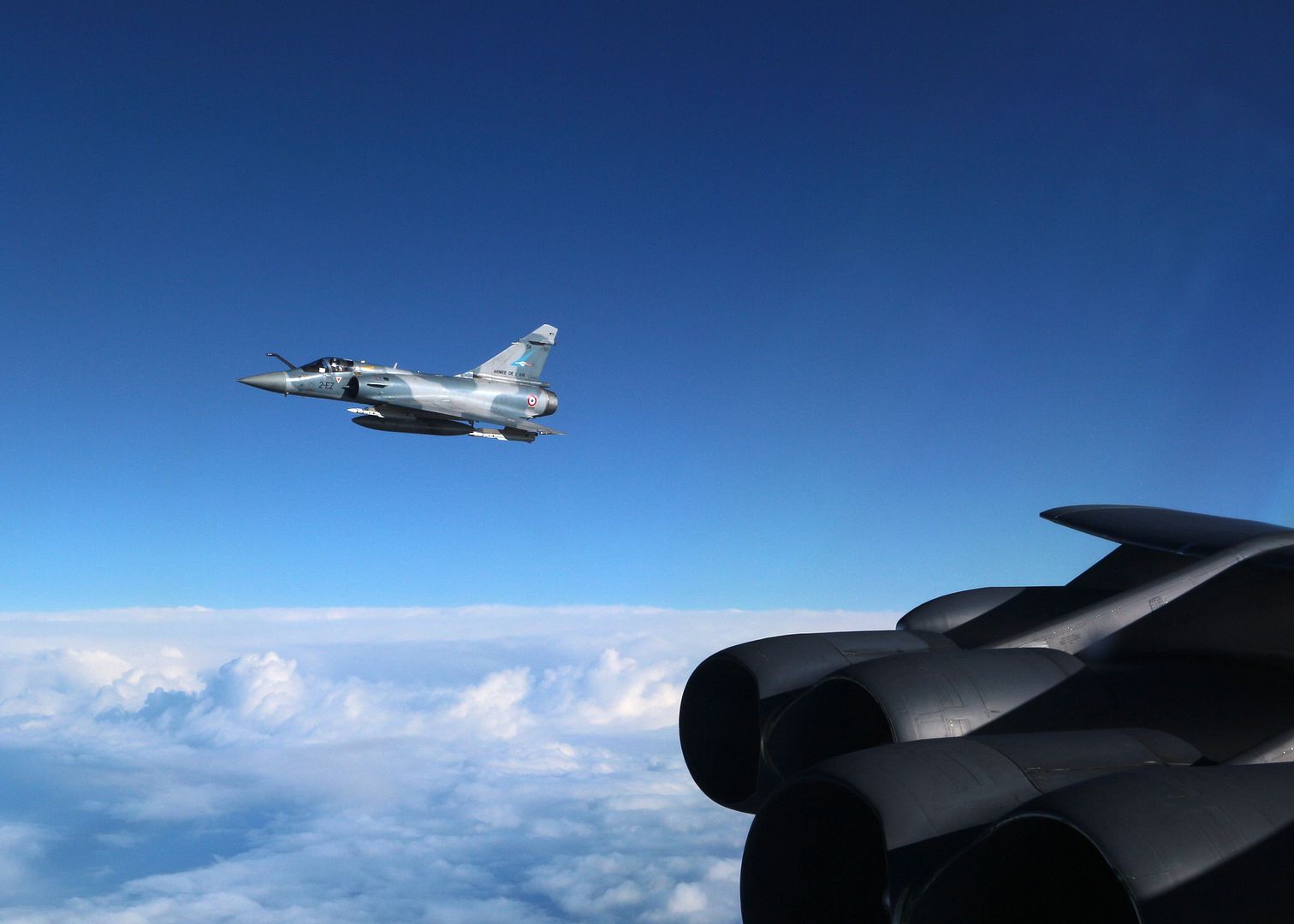
-
 Main AdminABU DHABI, United Arab Emirates, March 8, 2016 ? Boeing [NYSE: BA] and the Paramount Group, the South Africa-based global defense and aerospace business, have expanded their 2014 agreement to cooperate on an advanced mission system for a variant of the Advanced, High Performance, Reconnaissance, Light Aircraft (AHRLAC).
Main AdminABU DHABI, United Arab Emirates, March 8, 2016 ? Boeing [NYSE: BA] and the Paramount Group, the South Africa-based global defense and aerospace business, have expanded their 2014 agreement to cooperate on an advanced mission system for a variant of the Advanced, High Performance, Reconnaissance, Light Aircraft (AHRLAC).
A high-wing, two-seat aircraft, AHRLAC is designed to incorporate advanced intelligence, surveillance and reconnaissance (ISR) capabilities and weapons systems. Boeing will develop an integrated mission system for the aircraft enabling ISR and light strike missions for the AHRLAC safety & security, and military variants. This militarised version will be known as Mwari.
Speaking from the Global Aerospace Summit in Abu Dhabi, Jeffrey Johnson, vice president, Business Development, Boeing Military Aircraft, said, "Through AHRLAC, we'll not only bring a flexible, persistent and affordable aircraft to the international market, but we'll also be developing world-class technology in Africa."
"Our relationship with Paramount will help us access markets that are new to Boeing," Johnson added.
The Paramount Group is the largest privately owned defense and aerospace business in Africa, providing fully integrated turnkey solutions to global defense, peacekeeping and internal security forces. Since its inception in 1994, Paramount has built strong relationships with governments and government agencies in more than 30 countries around the world. Paramount is a leading innovator in the design and development of state-of-the-art products that it manufactures in locations globally and has partnered with some of the world?s largest and most reputable organizations in the global defense community.
-
9 years agoThu Mar 10 2016, 03:33pm
 Main AdminCool for Cats As Royal Marines New Helicopter Is Tested for First Time In Norway
Main AdminCool for Cats As Royal Marines New Helicopter Is Tested for First Time In Norway
(Source: Royal Navy; issued March 10, 2016)
The Royal Marines? ?flying eyes? on the battlefield have come through their ?baptism of ice? in the Arctic wilds of northern Norway.
For the first time, the new Wildcats of the Commando Helicopter Force have tested their ability to fly ? and fight ? in the harshest climatic conditions on the planet.
Four Wildcats from 847 Naval Air Squadron have spent six weeks contending with temperatures down to 30 below zero, snow storms and high winds.
Each winter the Commando Helicopter Force takes some of its aircraft, air and ground crew to Bardufoss ? roughly half way between Troms? and Narvik, and a good 170 miles inside the Arctic Circle.
The training ? Exercise Clockwork (because it?s regular as) ? is intended to ensure sailors and Royal Marines on the force can survive in such an unforgiving environment (living in tents or snow holes, if necessary, clambering out of holes in the ice if it breaks, cooking the local wildlife if you run out of rations) as well as maintain their helicopters and, in the case of the aircrew, fly them.
The latter saw the fliers run through the gamut of military operations from the basics of landing in snow ? the down-draught from the rotor blades throws up a swirling wall of fine snow ? to ferrying loads, scouting for the troops on the ground, a spot of shooting practice for the aircrewman with the machine-gun and using the Wildcat to direct Allied jets on to targets.
The Norwegian experience saw the Wildcats packed into the cavernous cargo holds of RAF C-17 transporters for the first time and demonstrated that the helicopters? mottled grey paint scheme is a highly-effective camouflage in the snow.
?I?ve been to Norway before but this is my first time flying here,? explained pilot Lieutenant Alex Lovell-Smith. ?The challenges are unique: the weather can change in an instant, so our captaincy and flying skills are always tested.
?I certainly feel that my aviation skills have improved in a way that only Norway can provide. Everyone on 847 agrees that Norway has given us an excellent opportunity to bond as a squadron ? and push the Wildcat to its limits in this new environment.?
When 847 arrived in northern Norway, they faced just three hours of daylight. By the time they left that had risen to nine, allowing for plenty of flying.
?The guys have pushed hard to learn the lessons and keep the aircraft on the line. Serviceability has been good ? that?s supported a high rate of flying and meant we successfully completed our training,? said air engineer technician PO John ?Julie? Andrews.
?For many of our more junior engineers, this has been their first time in Norway and they are all relishing the chance to come back again.?
The squadron made use of the facilities at the Norwegian Air Force Base in Bardufoss, working side-by-side with NH-90 and Bell 412 helicopters, while the Brits showed off their helicopter to their hosts.
?We came to Norway with definite objectives ? we?ve not just hit them, we?ve surpassed them,? said Commander Graeme Spence, 847?s Commanding Officer.
?Wildcat has met the challenge head-on, as have our people. Our flying rate has been high and we?ve achieved a lot more than just qualifying to operate in the Arctic environment.
?Norway?s always been a special place for the Commando Helicopter Force ? and we?ve made the most of the opportunities to test ourselves and our aircraft.?
Now back at base in Somerset, the squadron is preparing for the large-scale Anglo-French amphibious exercise in the Bristol Channel and Irish Sea next month, Griffin Strike, followed by desert warfare training in El Centro in southern California.
LUKE AIR FORCE BASE, Ariz. (AFNS) -- Aviation and F-35A Lightning II fanatics have something special to look forward to this 2016 air show season.
The Lightning II qualified March 6 at the Heritage Flight Conference at Davis-Monthan Air Force Base, Arizona, to take part in the Air Combat Command Air Force Heritage Flight program.
The program features modern Air Force fighter aircraft flying alongside World War II, Korean and Vietnam-era aircraft in a dynamic display of our nation's airpower history.
"Being a part of these heritage flights allows the world to learn more about the F-35 and at the same time see just how far airpower has come over the years," said Brig. Gen. Scott Pleus, the 56th Fighter Wing commander. "The F-35 will be the backbone of the Air Force fighter fleet and represent the future for the U.S., our partners and allies. This will be a great opportunity for everyone to see how amazing the F-35 is."
The F-35 heritage flight team includes one pilot and 10 maintainers, all selected from the 61st Fighter Squadron at Luke AFB.
?My team and I are very excited for this year,? said Maj. William Andreotta, an F-35 heritage flight team pilot. ?We?re so honored to be the first ever F-35 heritage flight team. We are really laying the foundation for years to come. We know it?s going to be a great season and we?re ecstatic about talking with different communities and showcasing the F-35.?
The team practiced their entire routine at the conference. The maintainers were able to show off their coordinated take-off and landing procedures while Andreotta practiced and perfected flying in formation with heritage aircraft. In the backseat of one of those heritage aircraft held a very interested passenger.
"I got to jump into the back of a P-51 Mustang and view an F-35 off the wing,? said Lt. Gen. Darryl Roberson, Air Education and Training Command commander. ?Our F-35 team is ready to hit the road for the show season. It was awesome to see it up close and personal. I feel very confident in what the Luke team is doing here, and I'm excited for them to show this aircraft off to the world."
From the opposite perspective, Andreotta experienced flying in formation with heritage aircraft for the first time during the conference.
?It?s surreal to be flying the latest and greatest fighter aircraft in the world and look over to see fighter aircraft from World War II, Vietnam and Korea right next to you that were at one point the greatest fighters of their generation,? Andreotta said. ?It?s like passing the torch in the lineage.?
Heritage flights are just as incredible on the ground as they are from the air.
?Viewers are going to get to see a remarkable show,? said Master Sgt. Ed DeLeon, F-35 heritage flight team superintendent. ?They will see America?s newest technology and compare the advances first hand. We?re going to showcase the past, present and future of the Air Force.?
The team will travel to 16 air shows around the U.S. and abroad.
"We're very excited about demonstrating this capability to the world," Air Force Chief of Staff Gen. Mark A. Welsh III said in January when the service first announced the F-35's participation in the Royal International Air Tattoo this summer at Royal Air Force Fairford, England. "The F-35 represents a new way of thinking about data integration, weapons and tactics. We're thrilled to highlight the program and the amazing Airmen who support this cutting-edge fighter."
The F-35 heritage flight team gets to officially start their historic first season at home.
?Our first show is at Luke,? DeLeon said. ?It?s nice to be able to start at home and showcase what we?re all about in front of our friends and families. After that, I?m so excited to get on the road and show the world what we?re all about.?
Luke AFB will present the "75 Years of Airpower" air show to the Arizona community April 2-3.
The F-35 Heritage Flight Team schedule:
- April 2-3: Luke AFB
- April 22-24: Langley AFB, Virginia
- May 7-8: Ft Lauderdale, Florida
- May 28-29: Jones Beach, New York
- June 18-19: Ocean City, Maryland
- June 25-26: Hill AFB, Utah
- July 8-17: RIAT/Farnborough, England
- Aug. 19-21: Chicago, Illinois
- Sept. 3-5: Cleveland, Ohio
- Sept. 14-18: Reno, Nevada
- Oct. 14-16: Baltimore, Maryland
- Nov. 12-13: Nellis, AFB, Nevada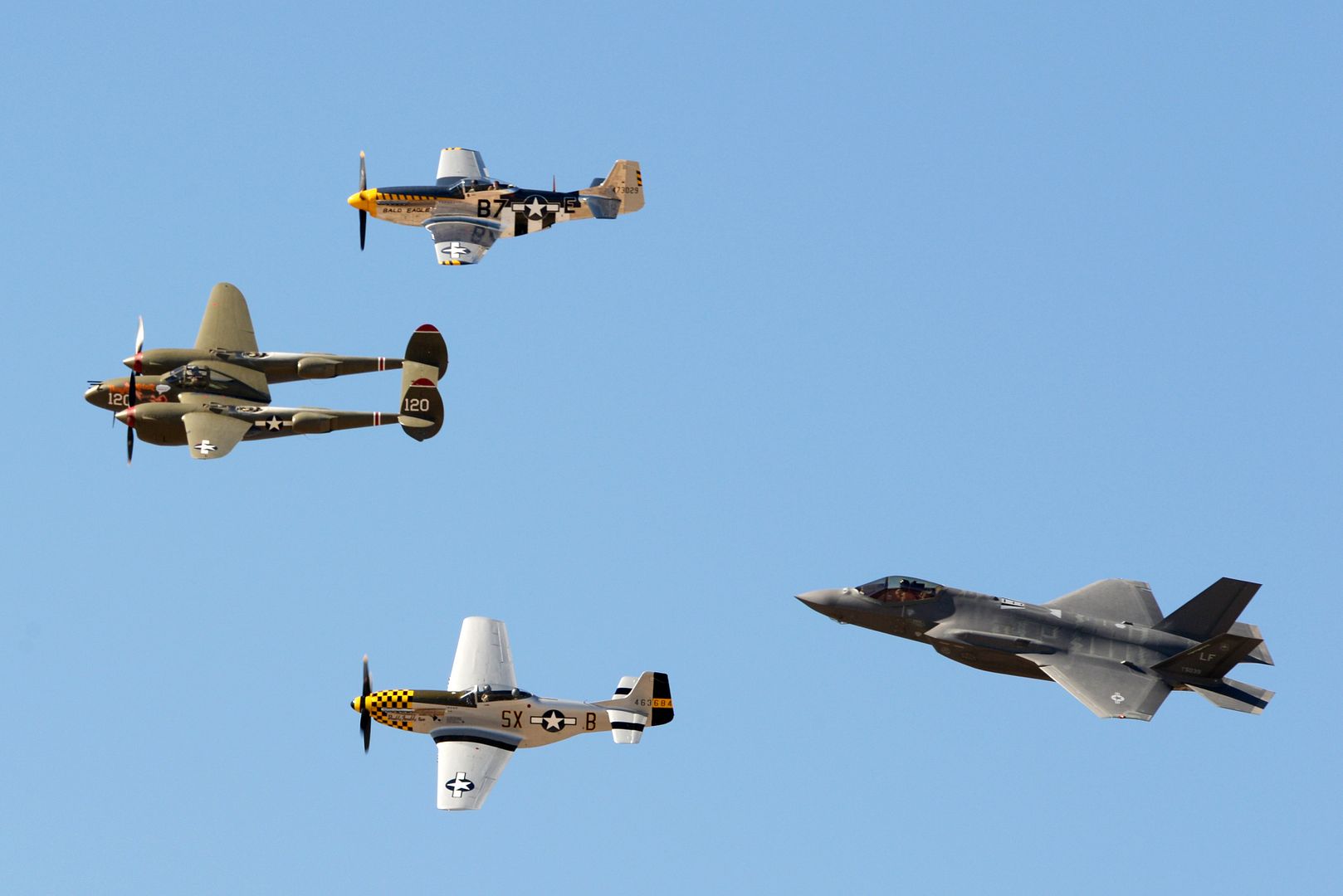
March 7th Romania
At the Mihail Kogalniceanu military base, there was the opening ceremony of the Romanian-Canadian year 2016, in the presence of general Nicolae Ciuca, Canadian Ambassador To Bucharest, Joanne Lemay, and Division Commander 1 Canadian, major general Dean Milner.
Approximately 200 troops from the Romanian air force aircraft, with MIG-21 Lancer and 330 Puma, will take place between 1 March-10 April, specific training, together with a squad consisting of Approximately 100 troops and four aircraft of type CF-18 hornet belonging to the royal Canadian air force.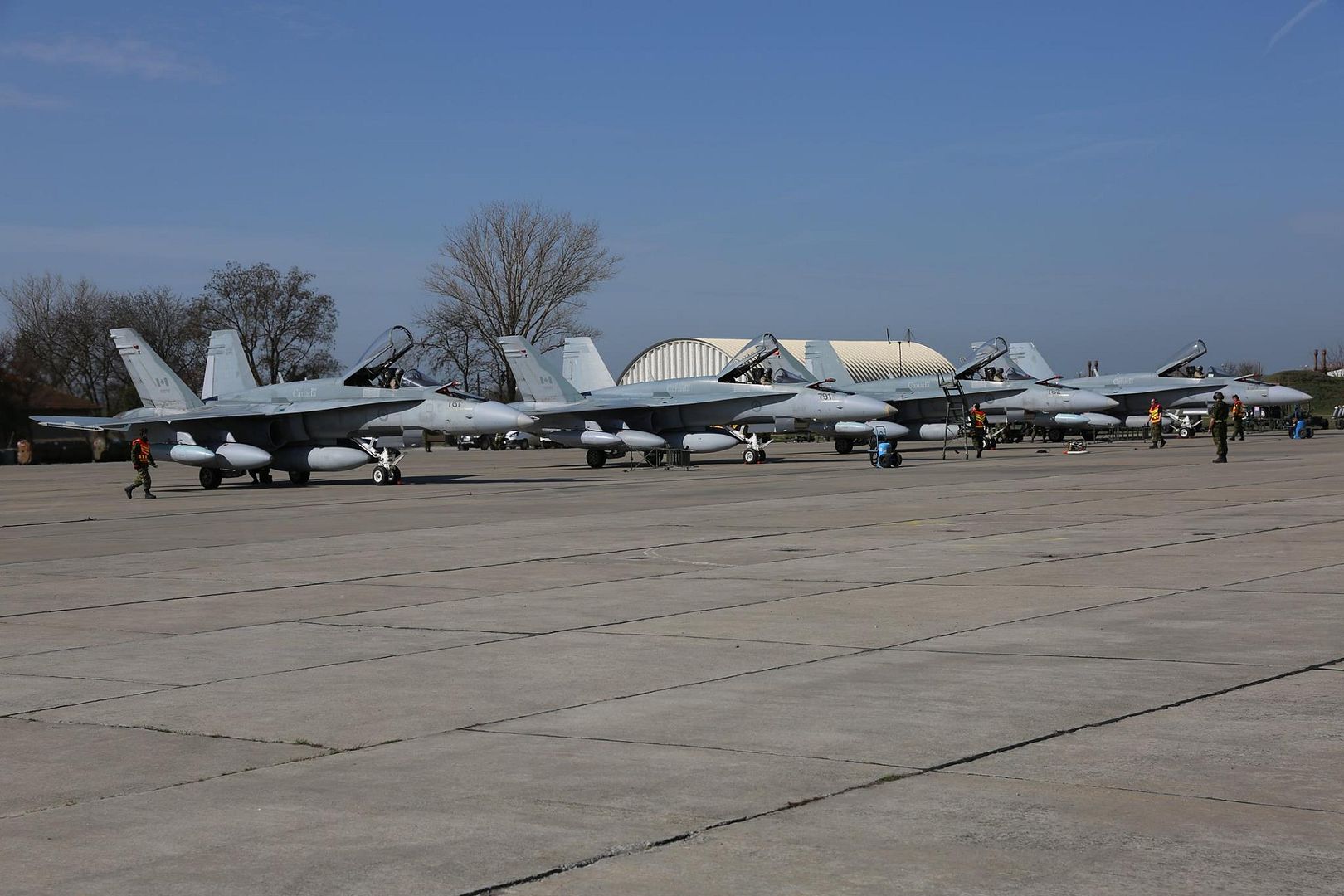
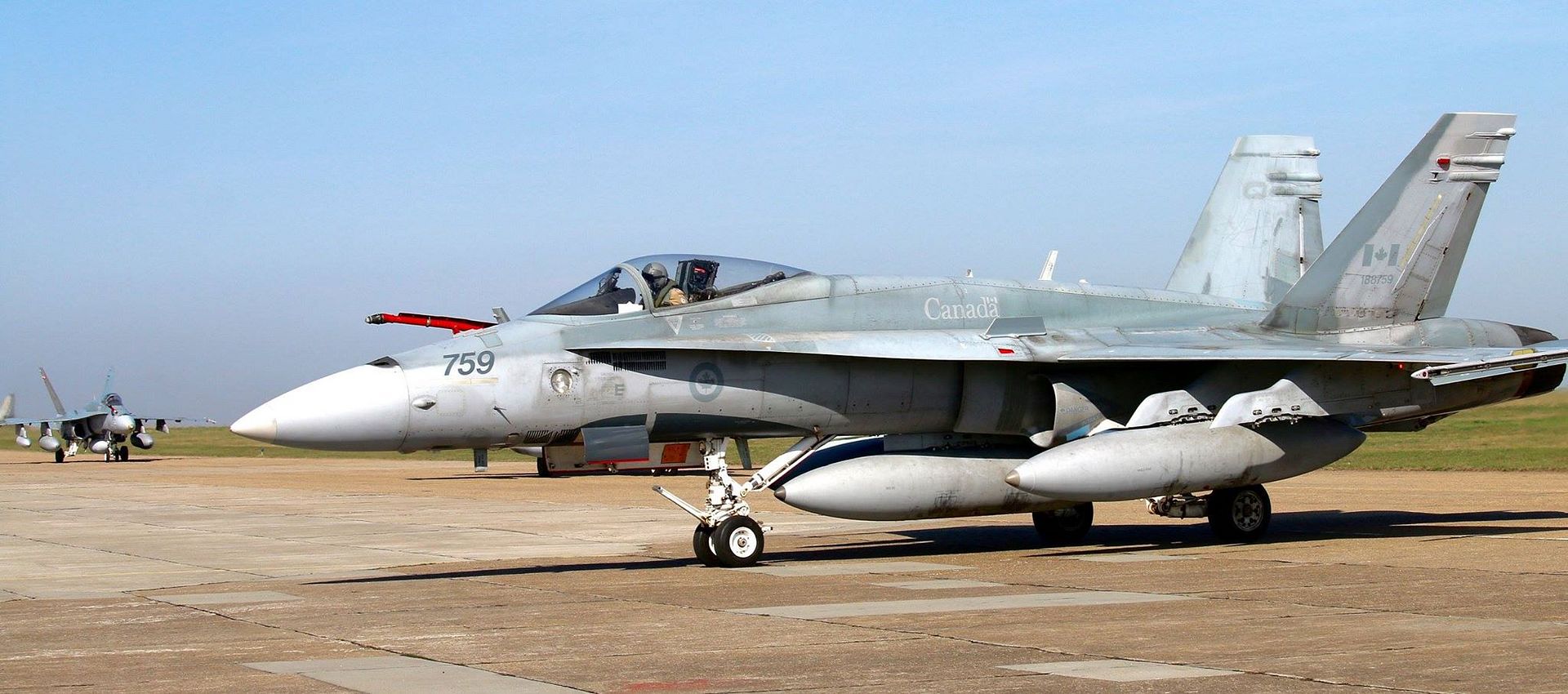
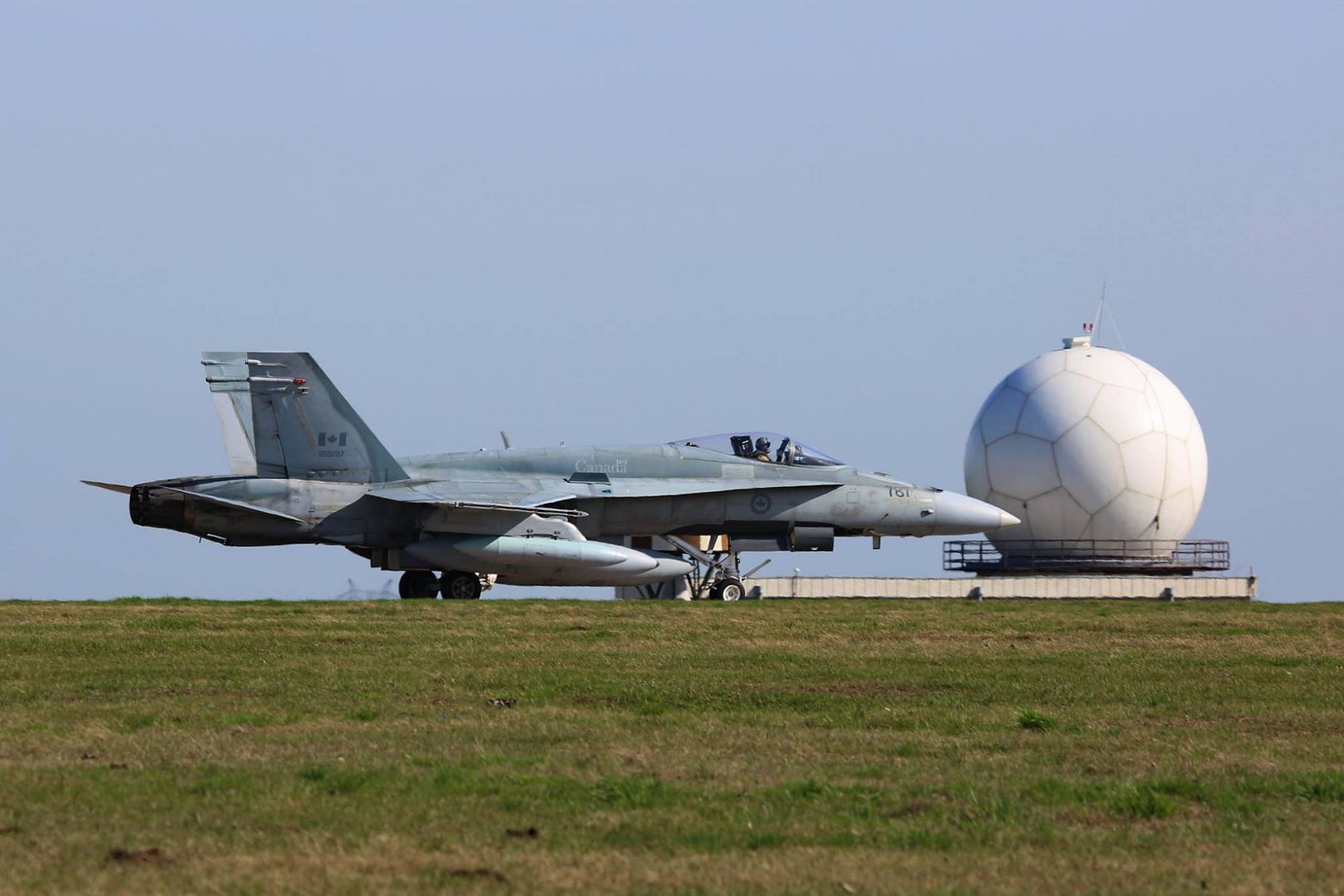
-
 Main AdminDown under the RAAF, unveil there new Hot Air Balloon.
Main AdminDown under the RAAF, unveil there new Hot Air Balloon.
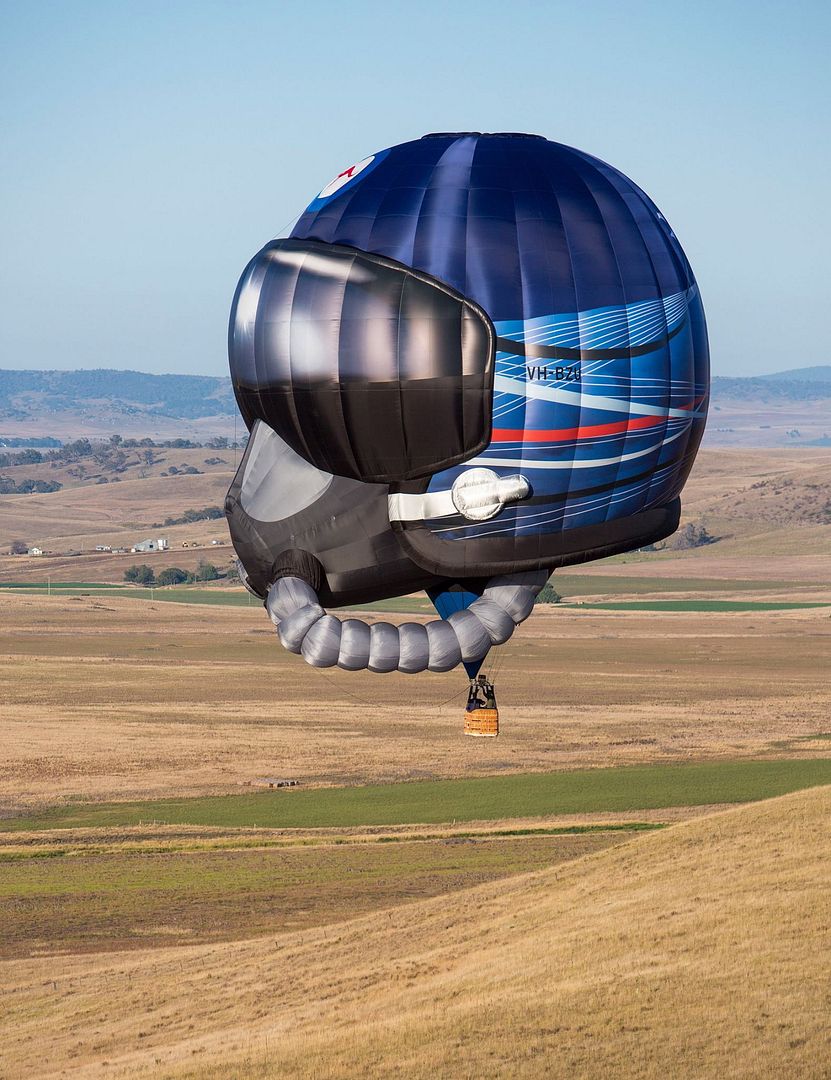
FA-18A++ Hornets with Marine Fighter Attack Squadron(VMFA) 314, forward based at Marine Corps Air Station Iwakuni, Japan, are lined up on the flightline at Komatsu Air Base, Japan, during the Komatsu Aviation Training Relocation exercise March 7-18, 2016. VMFA-314, also known as the ?Black Knights,? took the lead in conducting dissimilar air combat training and bilateral tactical mission training with the Japan Air Self-Defense Force. Not only does this training mission increase the squadron?s readiness in air-to-air mission sets and executes flight leadership qualification upgrades, it supports theater security cooperation and combined interoperability with the JASDF. (U.S. Marine Corps photo by Cpl. Nicole Zurbrugg/Released)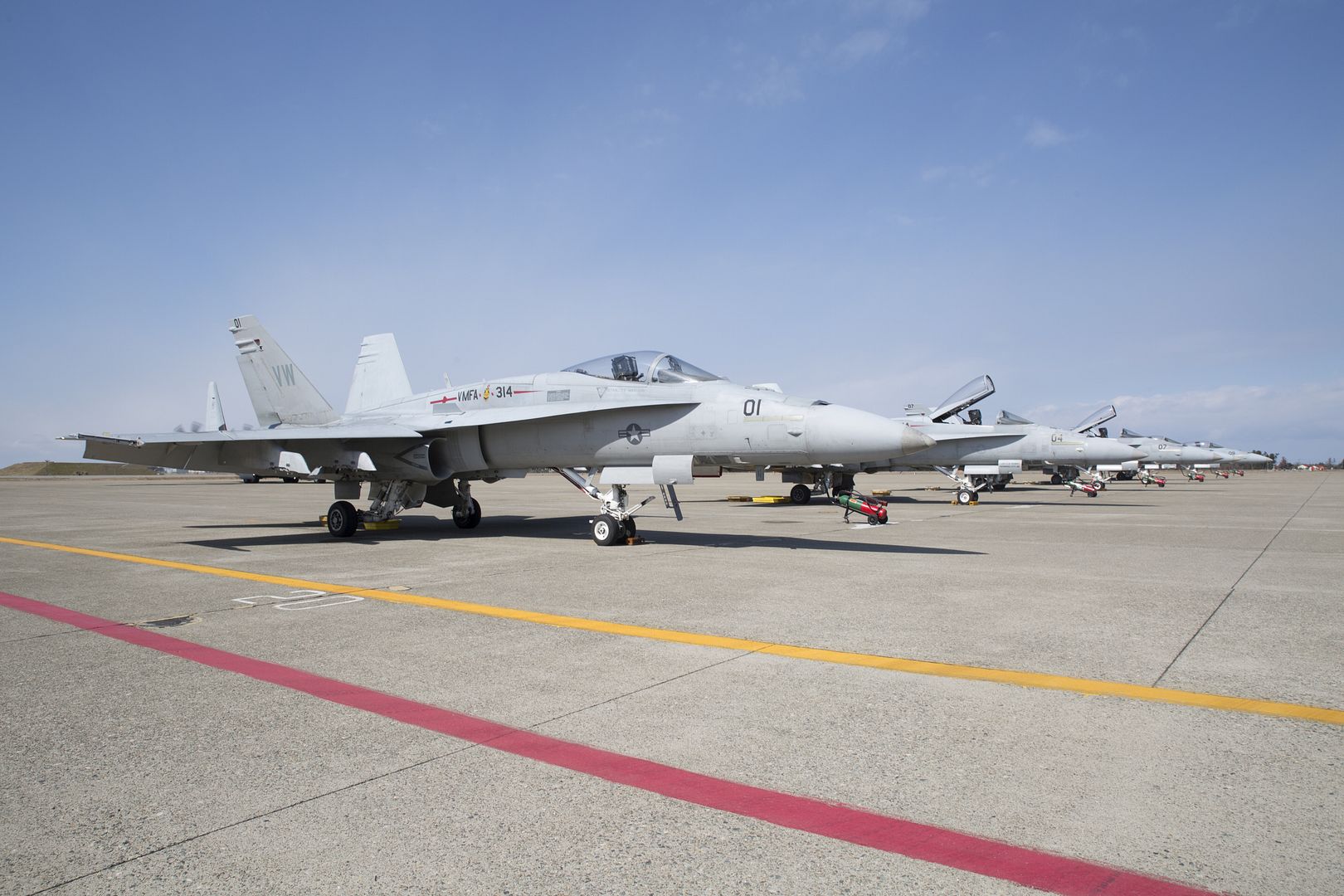
An Eglin Air Force Base F-35A Lightning II receives fuel from a KC-135 Stratotanker assigned to MacDill AFB approximately 100 miles off the Gulf Coast March 2, 2016 following the 58th Fighter Squadron's first successful munition employment at a nearby range. Airmen from the 33rd Fighter Wing were able to complete modifications to the aircraft ahead of schedule to enable the use of inert munitions instead of simulated weapons, advancing the fifth-generation fighter?s syllabus and ensuring pilots receive the most comprehensive training before they support a combat-coded F-35A unit. (U.S. Air Force photo/ Capt. Hope R. Cronin)
Three F-86 Sabres and an F-22 Raptor fly in formation during the 2016 Heritage Flight Training and Certification Course at Davis-Monthan Air Force Base, Ariz., March 6, 2016. Established in 1997, the course certifies civilian pilots of historic military aircraft and Air Force pilots to fly in formation together during the upcoming air show season. (U.S. Air Force photo/Senior Airman Chris Massey)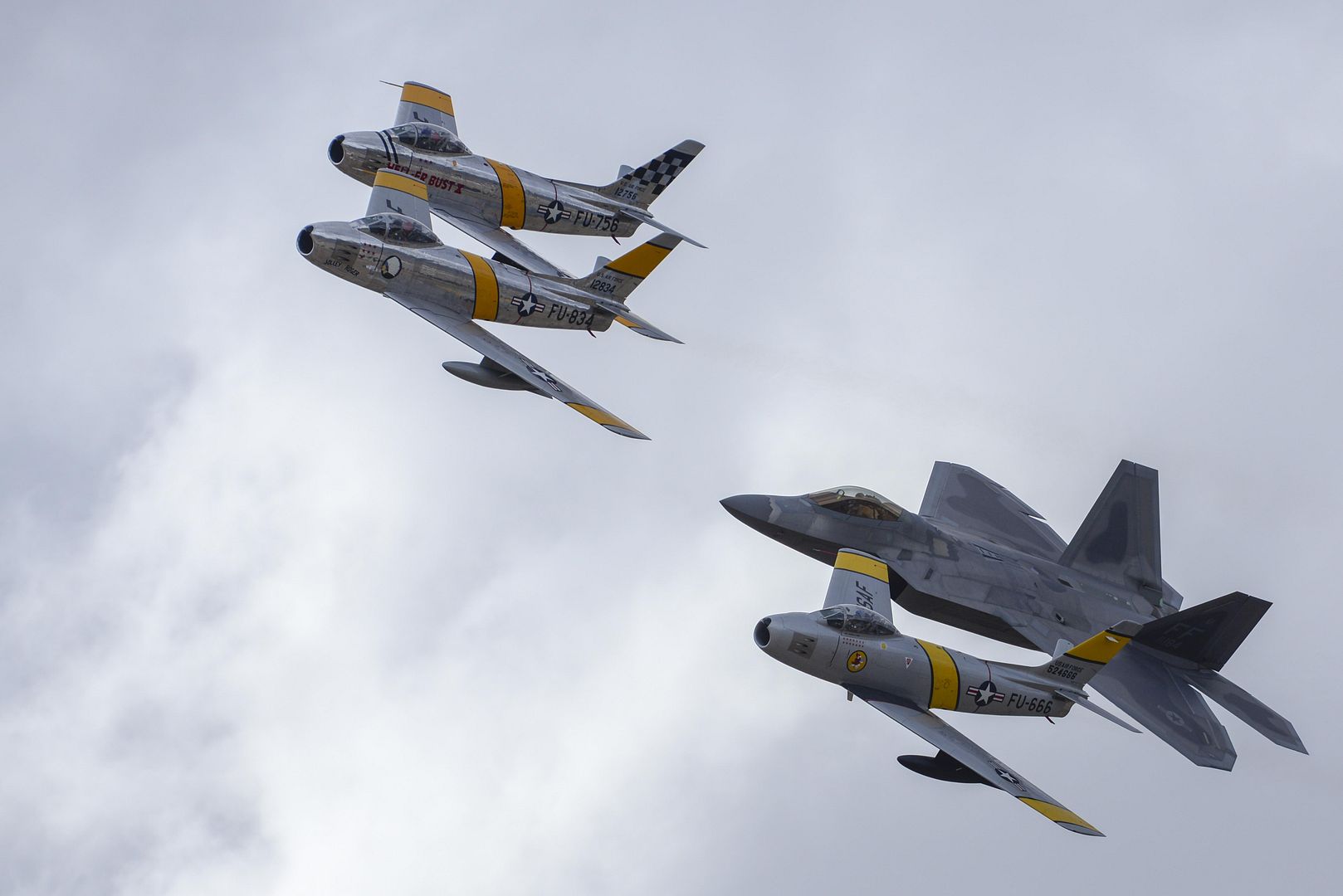
11 March 2016 Press Release
India?s largest airline by passenger numbers, IndiGo has taken delivery of its first A320neo. The delivery makes IndiGo the first A320neo operator in India and in Asia.
?The A320neo aircraft will enable us to continue to offer affordable air transportation and a new flying experience for our customers. The fuel efficient aircraft will be part of a new phase of our growth and will enable us to offer more regional and international destinations at the best price,? said Aditya Ghosh, President of IndiGo.
IndiGo is one of Airbus? biggest A320 Family customers having ordered 530 aircraft in total. These include 430 A320neo from orders placed in 2015 (250 A320neo) and 2011 (180 A32neo). IndiGo also placed an order in 2005 for 100 A320s which have all been delivered.
?It fills us with pride that IndiGo, India?s largest airline and the biggest customer for our A320neo, has taken delivery of its first aircraft. On top of best in class operational efficiencies and environmental benefits, the A320neo will offer IndiGo?s passengers unmatched comfort,? said Dr. Kiran Rao, Airbus EVP Strategy and Marketing.
The A320neo ?new engine option? incorporates many innovations, including latest generation engines and large Sharklet wing-tip devices, which together deliver 15 percent in fuel savings from day one and 20 per cent by 2020. This is equivalent to a reduction of 5,000 tonnes of CO2 per aircraft per year.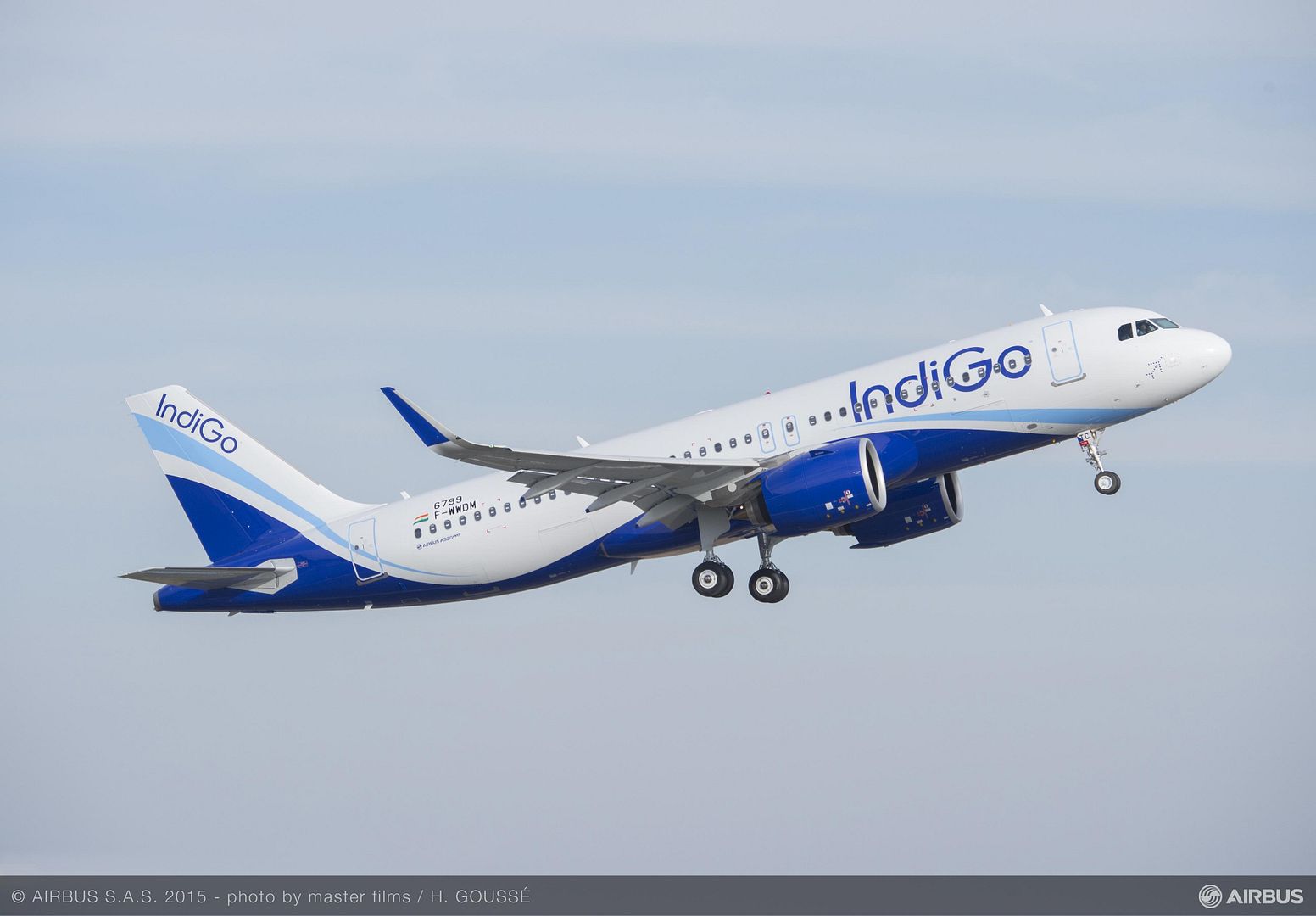
-
 Main AdminU.S. Air Force Maj. Alex Turner, USAF Air Demonstration Squadron opposing solo pilot, performs an inverted pass during the Thunder and Lightning over Arizona Open House event at Davis-Monthan Air Force Base, Ariz., March 12, 2016. The hour-long demonstration gave spectators the chance to witness the precise maneuvers and capabilities exhibited by these F-16 Fighting Falcon pilots. (U.S. Air Force photo by Senior Airman Chris Drzazgowski/Released)
Main AdminU.S. Air Force Maj. Alex Turner, USAF Air Demonstration Squadron opposing solo pilot, performs an inverted pass during the Thunder and Lightning over Arizona Open House event at Davis-Monthan Air Force Base, Ariz., March 12, 2016. The hour-long demonstration gave spectators the chance to witness the precise maneuvers and capabilities exhibited by these F-16 Fighting Falcon pilots. (U.S. Air Force photo by Senior Airman Chris Drzazgowski/Released)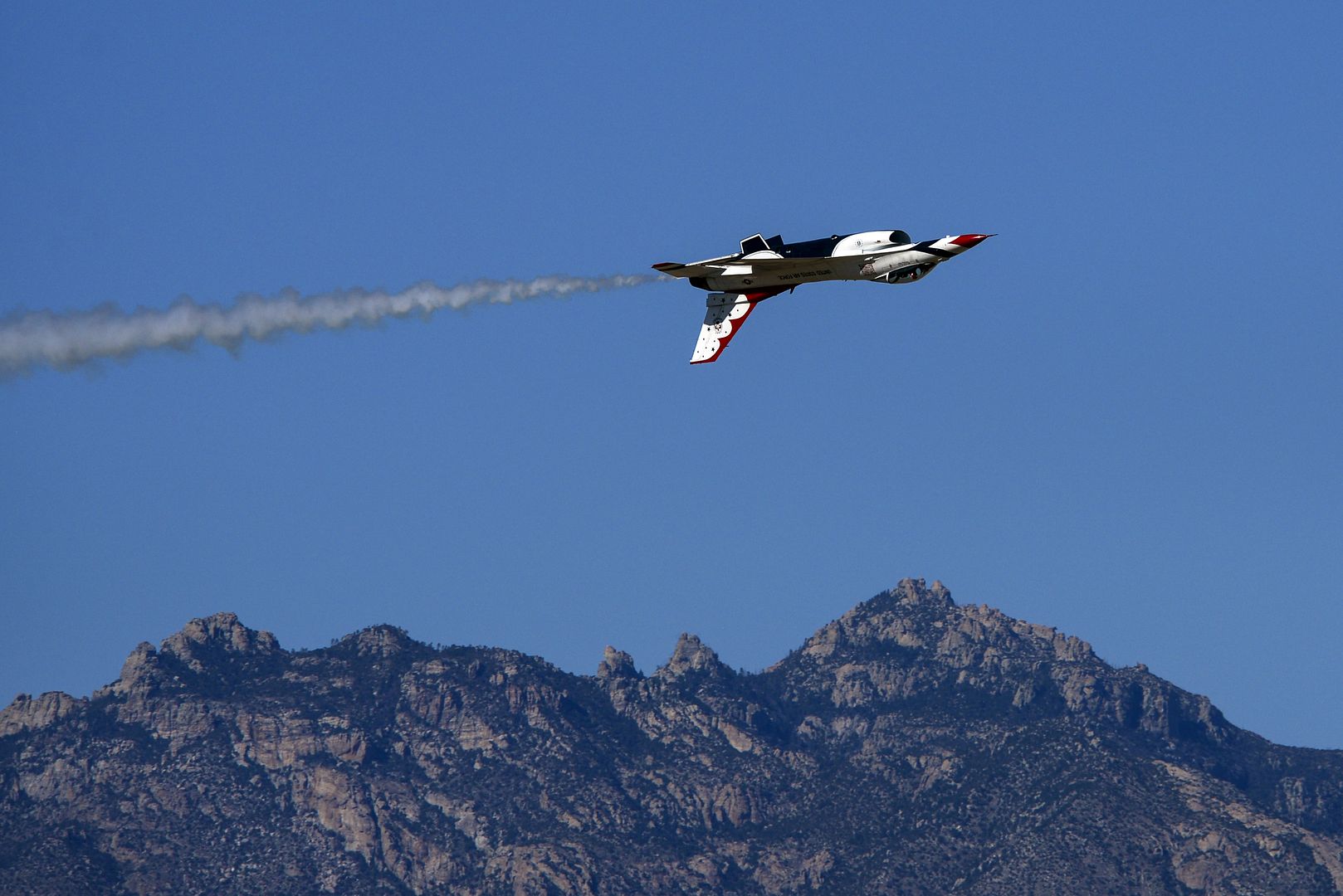
The Thunderbirds Diamond formation passes over the crowd during the Thunder and Lightning Over Arizona air show at Davis-Monthan Air Force Base, Ariz., March 12, 2016. (U.S. Air Force Photo by Tech. Sgt. Christopher Boitz)
-
 Main AdminA CF-188 Hornet with Air Task Force-Romania lands at Mihail Kogalniceanu Air Base in Constanta, Romania during Exercise RESILIENT RESOLVE on March 10, 2016.
Main AdminA CF-188 Hornet with Air Task Force-Romania lands at Mihail Kogalniceanu Air Base in Constanta, Romania during Exercise RESILIENT RESOLVE on March 10, 2016.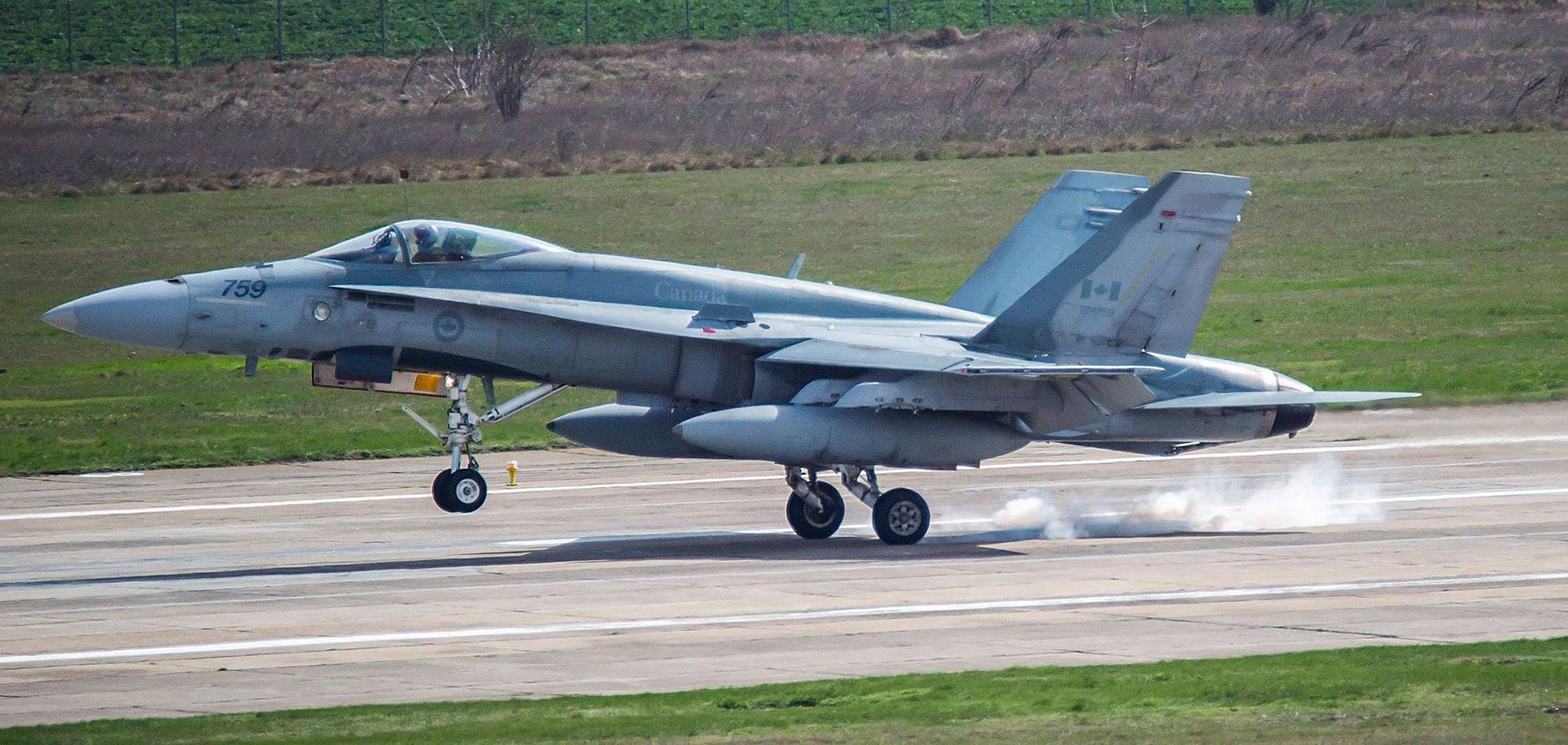
Rock band Iron Maiden?s newly-customised Boeing 747-400 has been extensively damaged in a ground-towing accident in Santiago that injured two tractor operators.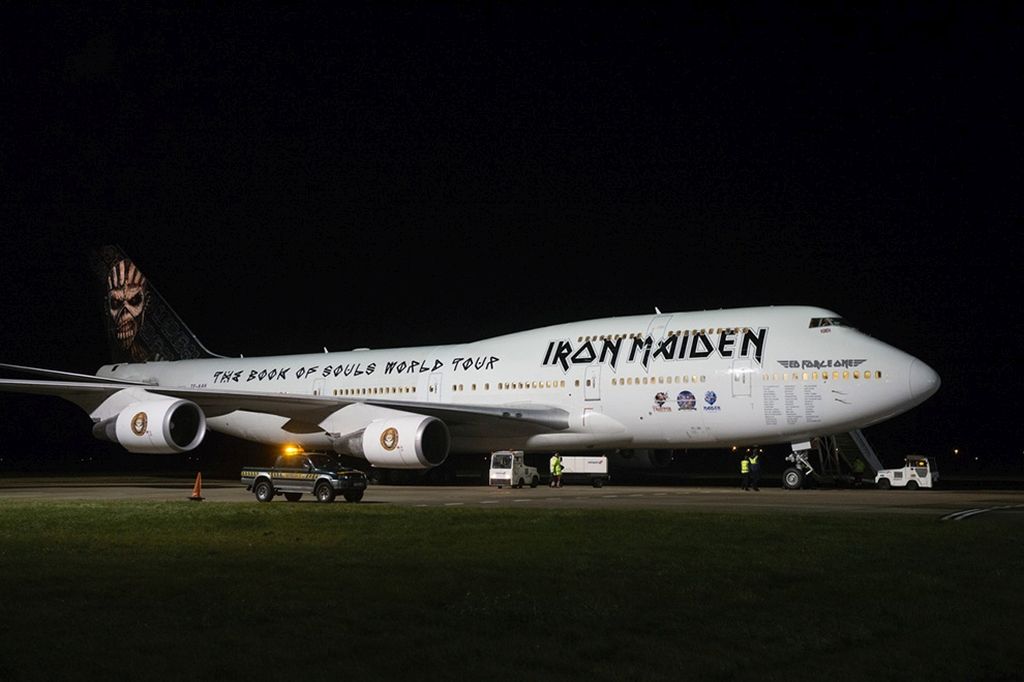
It had arrived at Santiago for a concert on 11 March but the band states that, on 12 March, it was hitched to a tug to be towed for refuelling.
?On moving, the steering pin that is part of the mechanism that connects the ground tug to the aircraft seemingly fell out,? it says.
Steering failed during a turn and the aircraft collided with the tractor, it adds, badly damaging the nacelles and inlet cowls of both left-hand General Electric CF6 powerplants, as well as its undercarriage.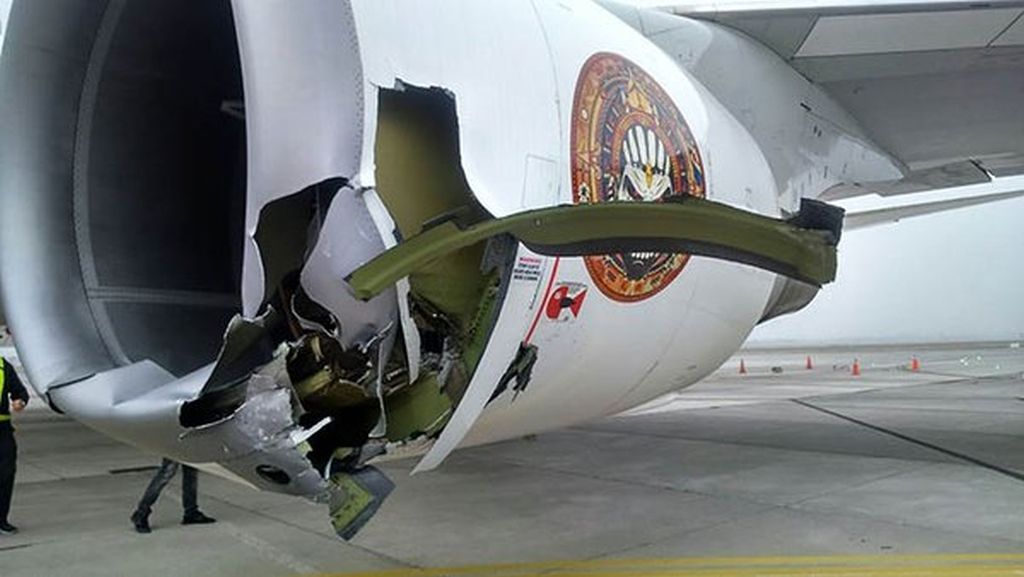
-
 Main AdminCloudy with a chance of GBUs
Main AdminCloudy with a chance of GBUs
Capt. Brad Hunt, 421st Expeditionary Fighter Squadron pilot, performs preflight checks on F-16 Fighting Falcon at Bagram Air Field, Afghanistan, March 14, 2016. The 421st EFS, based out of Bagram Air Field, Afghanistan, is the only dedicated fighter squadron in the country and continuously supports Operation Freedom?s Sentinel and the NATO Resolute Support mission. (U.S. Air Force photo by Tech. Sgt. Robert Cloys)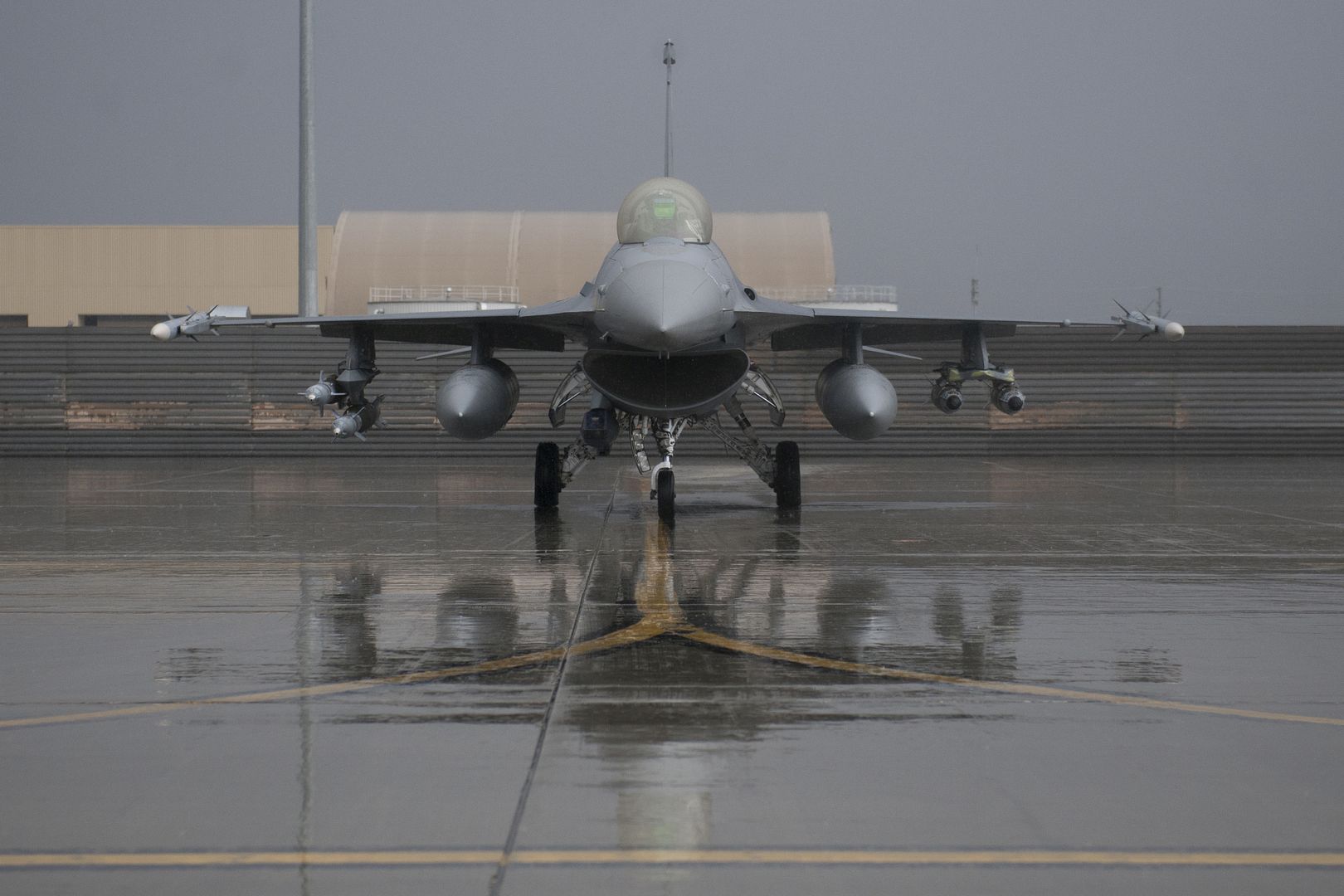
Capt. Brad Hunt, 421st Expeditionary Fighter Squadron pilot, taxis to the runway in an F-16 Fighting Falcon before a combat sortie at Bagram Air Field, Afghanistan, March 14, 2016. The 421st EFS, based out of Bagram, is the only dedicated fighter squadron in the country and continuously supports Operation Freedom?s Sentinel and the NATO Resolute Support mission. (U.S. Air Force photo by Tech. Sgt. Robert Cloys)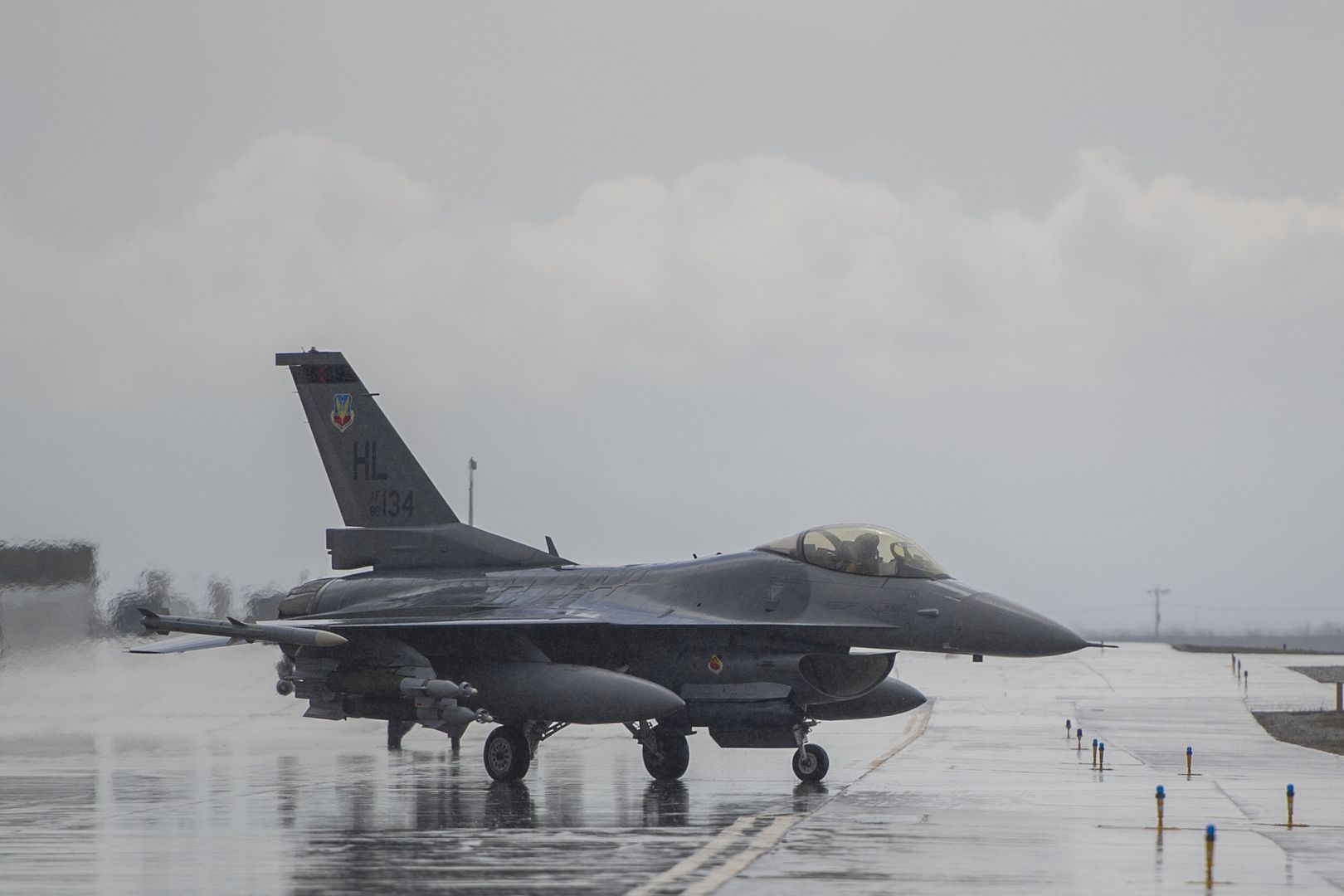
Capt. Tim Six, 421st Expeditionary Fighter Squadron pilot, takes off for a combat sortie in an F-16 Fighting Falcon at Bagram Air Field, Afghanistan, March 14, 2016. The 421st EFS, based out of Bagram, is the only dedicated fighter squadron in the country and continuously supports Operation Freedom?s Sentinel and the NATO Resolute Support mission. (U.S. Air Force photo's by Tech. Sgt. Robert Cloys)
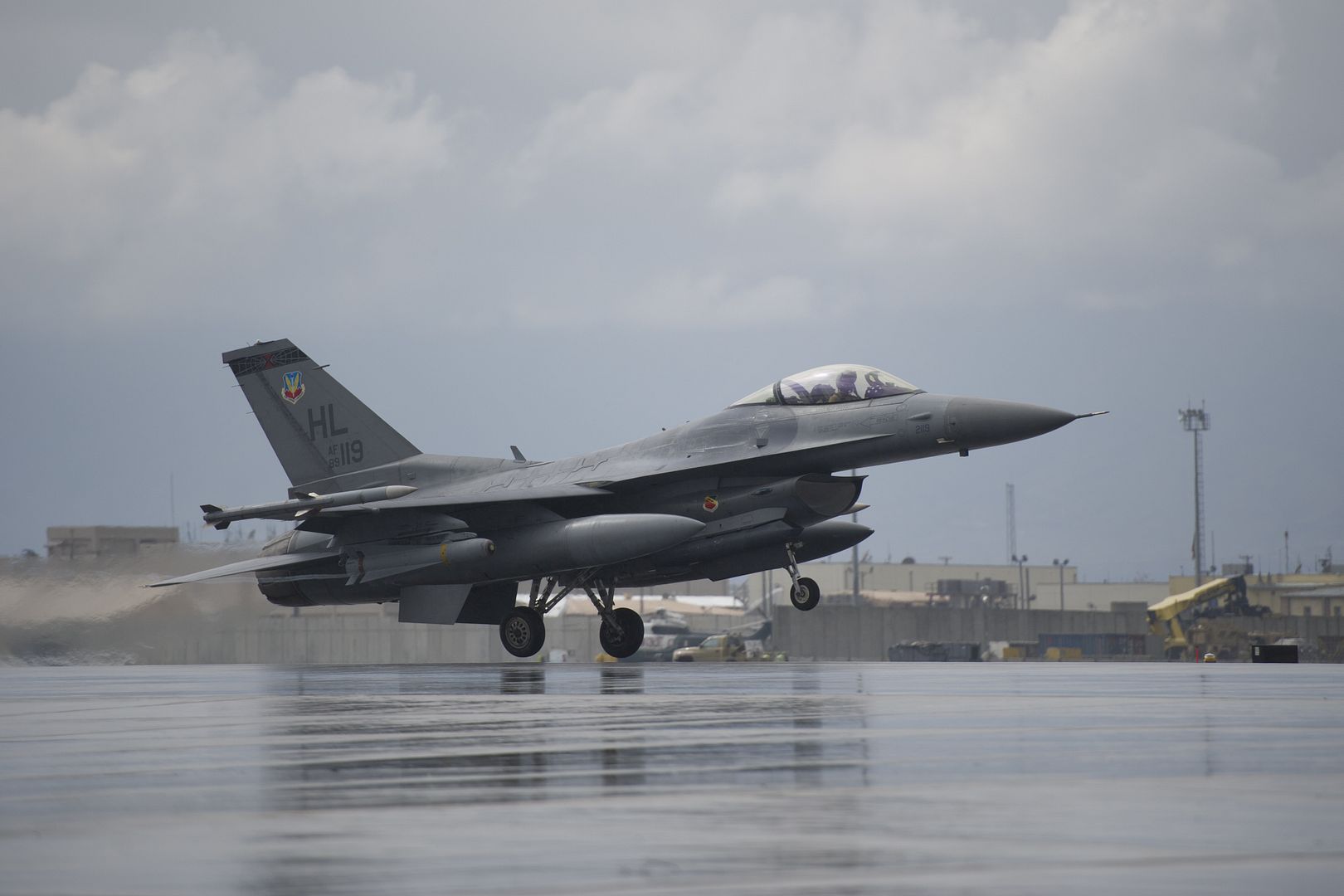
In a surprise move, President Vladimir Putin has instructed Russia?s armed forces to start pulling out of Syria.
Putin told Defense Minister Sergei Shoigu on March 14 that Russian military forces had largely fulfilled their objectives in Syria.
"I am therefore ordering the defense minister, from tomorrow, to start the withdrawal of the main part of our military contingent? from Syria, he added.
Speaking on the day UN-brokered talks between the warring sides in Syria resumed in Geneva, Putin expressed hope that the withdrawal of Russian troops will be a stimulus for a political resolution of the conflict.
Russia has more than 50 jets and helicopters in Syria and a small ground component protecting them, along with a number of advisers and special forces operating with the Syrian military.
The Russian leader said Russian forces would stay on at the Mediterranean naval base at Tartus and at the Hmeimim air base in Latakia Province, from which Russia has launched most of its air strikes.
WEST PALM BEACH, Fla., March 14, 2016 ? Sikorsky, a Lockheed Martin Company (NYSE:LMT), today announced the second CH-53K helicopter has joined the flight test program and achieved first flight. In addition the first aircraft into the test program has achieved flight envelope expansion to 120 knots for the U.S. Marine Corps? CH-53K King Stallion heavy lift helicopter program.
"Adding a second aircraft into flight status signifies another milestone for the CH-53K program," said Mike Torok, Sikorsky's vice president of CH-53K Programs. "With both aircraft in flight test, our flight envelope expansion efforts will accelerate as we continue to make good progress toward our initial operational test assessment and full aircraft system qualification."
The first and second CH-53K heavy lift helicopter Engineering Development Models (EDM) achieved their first flights on Oct. 27, 2015, and Jan. 22, 2016, respectively. To date these helicopters have achieved over 35 flight hours combined including multiple flights with an active duty USMC pilot at the controls. As the flight test program proceeds, these two flying CH-53K helicopters will be joined by two additional aircraft to complete flight qualification of the USMC's next generation heavy lift capability over an approximately three-year flight test program.
These first two aircraft are the most heavily instrumented of the Engineering Development Models (EDM) and will focus on structural flight loads and envelope expansion. When the other two EDM aircraft join the flight line in 2016 they will focus on performance, propulsion and avionics flight qualification.
"It is exciting to have two CH-53K helicopters flying," said Col. Hank Vanderborght, U.S. Marine Corps program manager for Heavy Lift Helicopters. "Our program continues on pace to deploy this incredible heavy lift capability to our warfighters."
Sikorsky is now developing the CH-53K King Stallion heavy lift helicopter for the U.S. Marine Corps. The King Stallion maintains similar physical dimensions with a reduced "footprint" compared to its predecessor, the three-engine CH-53E SUPER STALLION helicopter, but will more than triple the payload to 27,000 pounds over 110 nautical miles under "high hot" ambient conditions.
Features of the CH-53K helicopter include a modern glass cockpit; fly-by-wire flight controls; fourth-generation rotor blades with anhedral tips; a low maintenance elastomeric rotor head; upgraded engines; a locking, United States Air Force pallet compatible cargo rail system; external cargo handling improvements; survivability enhancements; and improved reliability, maintainability and supportability.
The U.S. Department of Defense's program of record remains at 200 CH-53K aircraft. The Marine Corps intends to stand up eight active duty squadrons, one training squadron, and one reserve squadron to support operational requirements.
This press release contains forward looking statements concerning opportunities for development, production and sale of helicopters. Actual results may differ materially from those projected as a result of certain risks and uncertainties, including but not limited to changes in government procurement priorities and practices, budget plans, availability of funding and in the type and number of aircraft required; challenges in the design, development, production and support of advanced technologies; as well as other risks uncertainties, including but not limited to those detailed from time to time in Lockheed Martin Corporation?s Securities and Exchange Commission filings.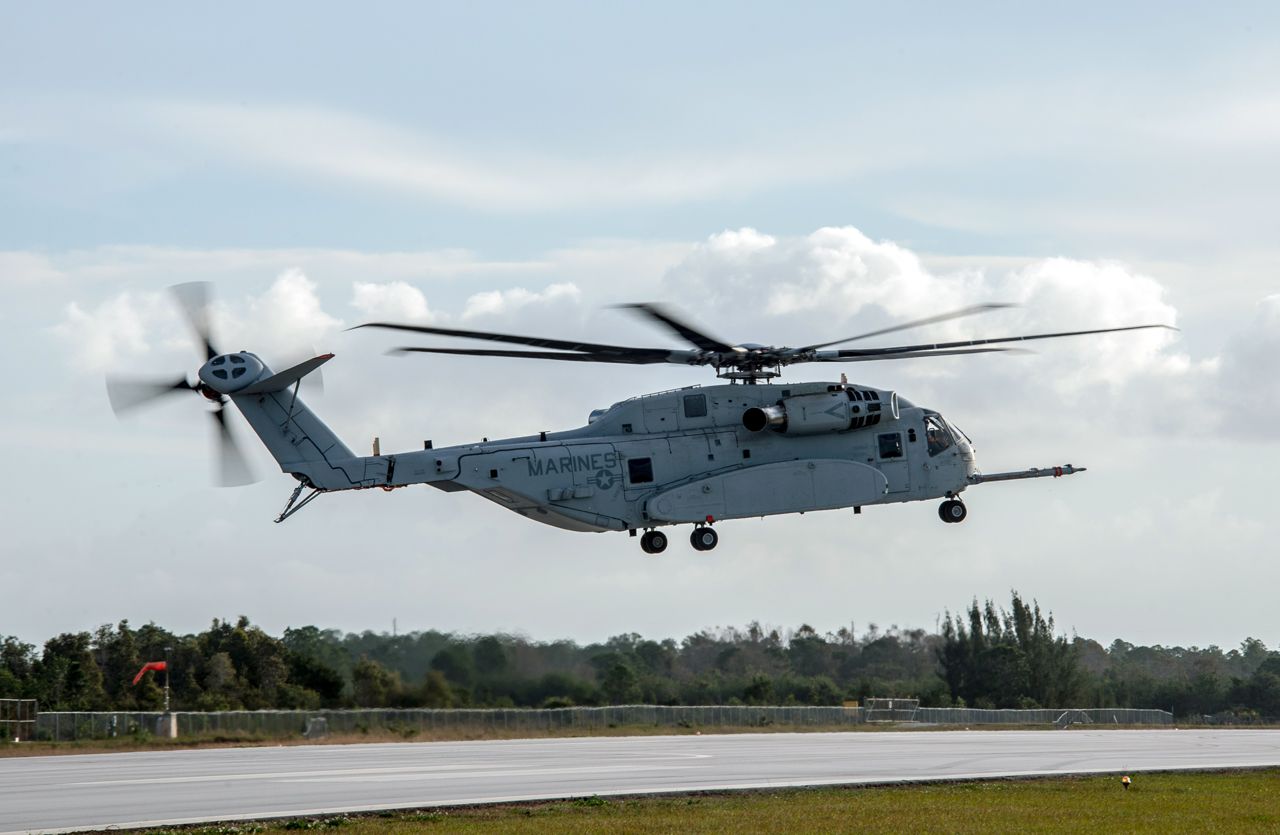
MARIETTA, Ga., March 14, 2016 ? Lockheed Martin (NYSE: LMT) recently delivered two KC-130J Super Hercules aerial refuelers to the Kingdom of Saudi Arabia, to be operated by Royal Saudi Air Force (RSAF) crews.
The Kingdom of Saudi Arabia is the 16th country to operate the C-130J Super Hercules to meet its refueling and airlift needs. Saudi Arabia has the distinction of having the largest legacy Hercules fleet outside of the United States of America. These new KC-130Js were acquired by the Kingdom through a Foreign Military Sales program with the U.S. government.
?Our decades-long C-130 partnership with Saudi Arabia continues with the addition of the KC?130J to the RSAF airlift fleet,? said Christopher Antone, Lockheed Martin vice president of Business Development for Saudi Arabia. ?We are honored by the Kingdom?s decision to enhance its existing fleet with the proven capabilities and superior performance of the KC-130J Super Hercules. With more than 50 years of C-130 operations in the Kingdom, we look forward to continuing our partnership with Saudi Arabia in the years to come.?
The KC-130J aerial refueler is the latest in a long line of combat-proven C-130 Hercules tankers. The KC-130J is a proven platform in use worldwide, taking full advantage of technological and performance enhancements inherent in the C-130J Super Hercules. The KC-130J refuels tactical aircraft, helicopters and tilt-rotors. In addition, it is also capable of conducting rapid ground refueling of expeditionary forces.
The C-130J Super Hercules is the proven standard in tactical airlift, providing a unique mix of versatility and performance to complete any mission, anytime, anywhere. The Super Hercules worldwide fleet has more than 1.3 million flight hours to its credit and is flown by 19 different operators.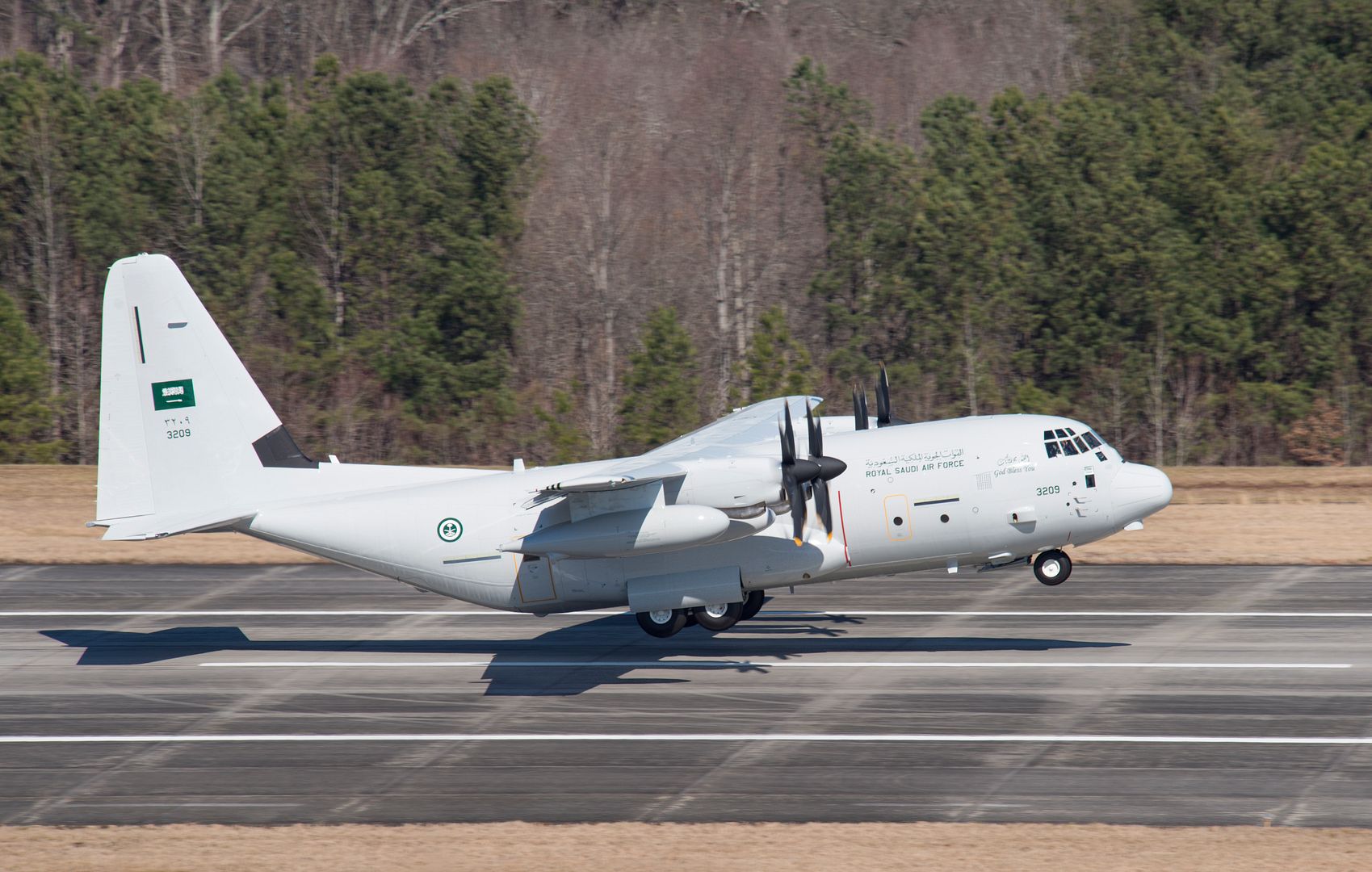
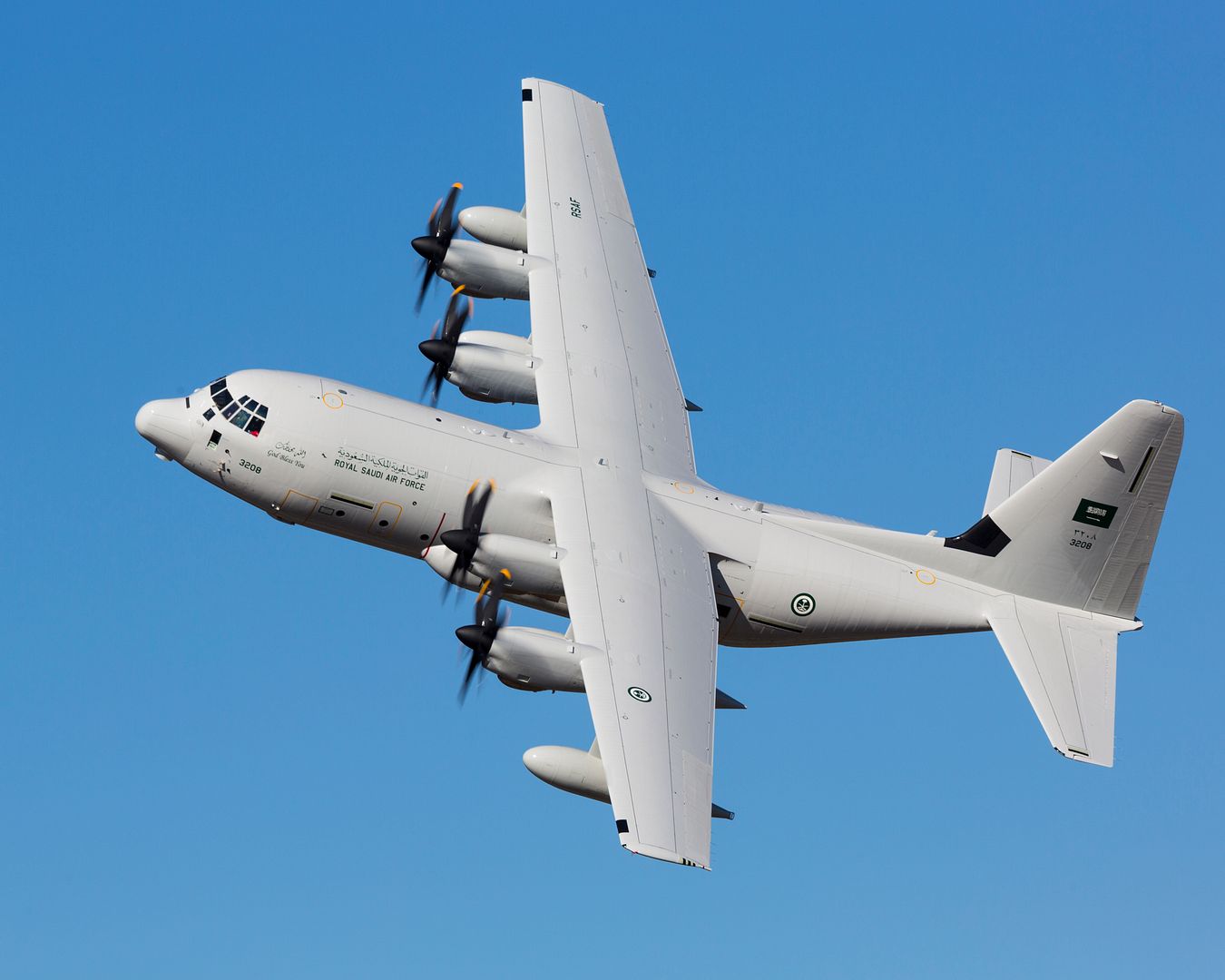
EVERETT, Wash., March 15, 2016 /PRNewswire/ -- Major assembly of the first Boeing (NYSE: BA) 787-10 Dreamliner is underway, the latest major milestone in the development of the newest member of the super-efficient 787 family. Boeing partner Kawasaki Heavy Industries, Ltd. began installing the circular frames into the midforward section of the fuselage on March 14, a full two weeks ahead of schedule.
"Beginning major assembly early underscores the commitment, discipline and performance of the entire Boeing and partner team worldwide," said Ken Sanger, vice president of 787 Airplane Development, Boeing Commercial Airplanes. "We are taking all the right steps to ensure we integrate the 787-10 into the production system smoothly."
As a straightforward stretch of the 787-9, which entered service in 2014, Boeing designed the 787-10 for both superior efficiency and maximum commonality. Ninety-five percent of the design and build of the 787-10 and 787-9 will be identical, reducing complexity, cost and risk across the entire production system while providing operational benefits to customers.
The 787-10, which will undergo final assembly at Boeing South Carolina in North Charleston, will set a new benchmark in efficiency when deliveries begin in 2018. With a robust range capability covering more than 90 percent of the world's twin-aisle routes, the 787-10 will deliver 25 percent better fuel use and emissions than the airplanes it will replace and at least 10 percent better than anything being offered by the competition in the future.
To date, the 787-10 has won 153 orders from nine leading customers around the world, accounting for 13 percent of all 787 orders.
-
 Main AdminA RCAF CC-130T Hercules feeds an RCAF CF-188 Hornet fighter in the sky over Florida during Exercise Puma Strike, which is taking place between February 28 and March 23.
Main AdminA RCAF CC-130T Hercules feeds an RCAF CF-188 Hornet fighter in the sky over Florida during Exercise Puma Strike, which is taking place between February 28 and March 23.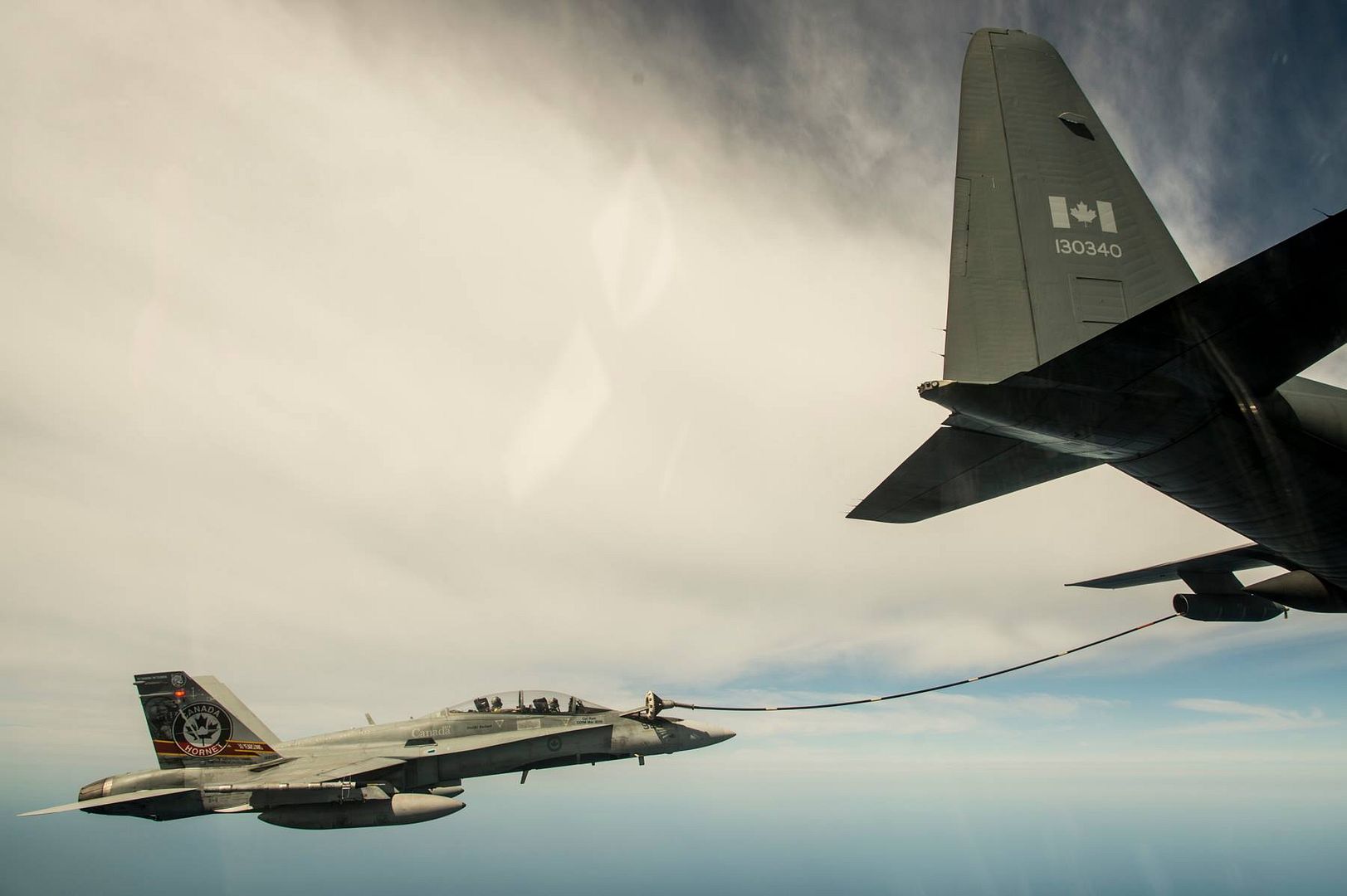
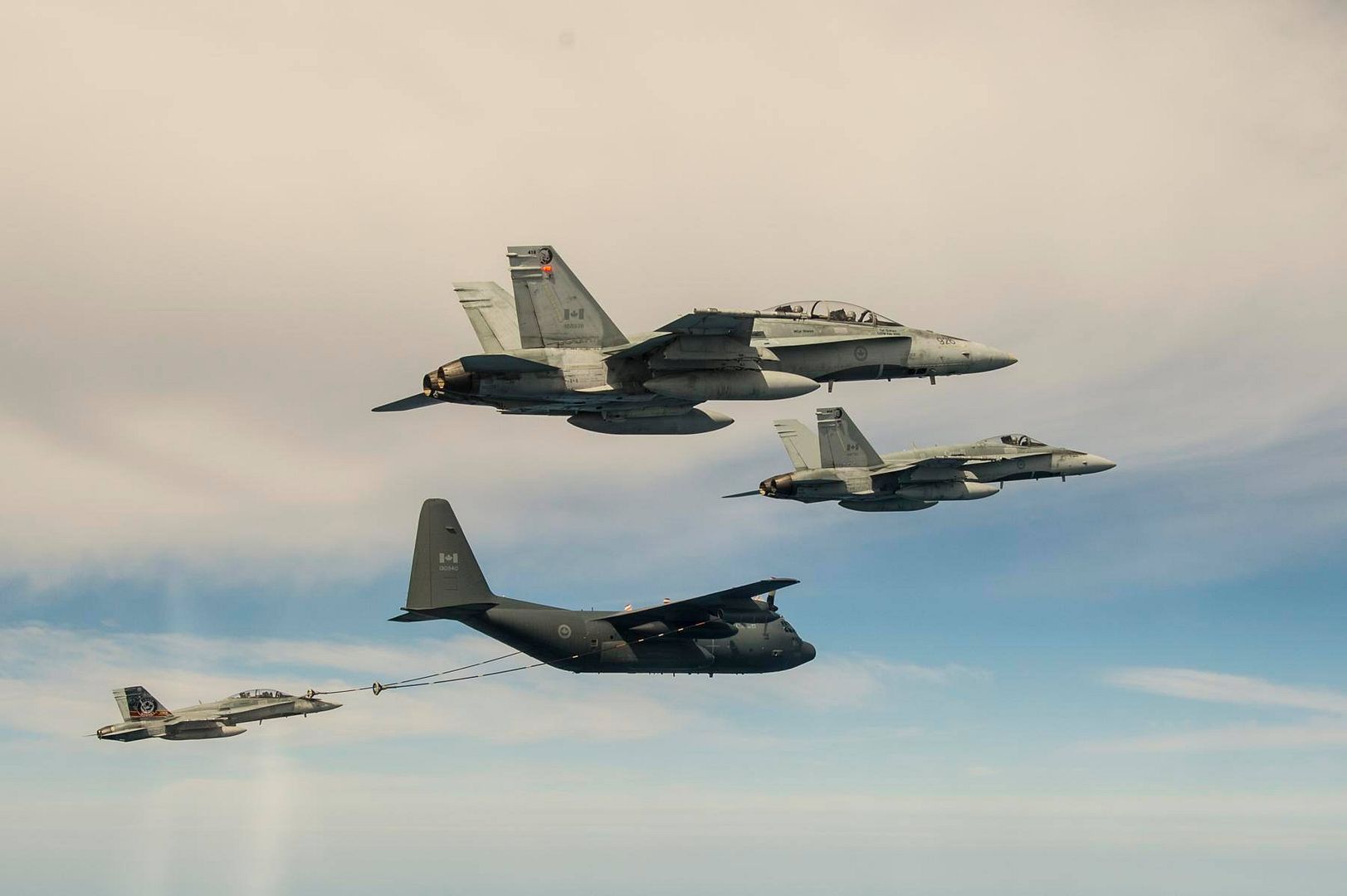
Exercise Puma Strike 2016, held at Naval Air Station Key West, Florida, is an annual deployment to a warm, southern location to take advantage of better flying conditions. This allows Royal Canadian Air Force Squadrons to conduct more training in less time. During the duration of the deployment more than 200 personnel, as many as 21 CF-188 Hornets and a CC-130T Hercules are involved.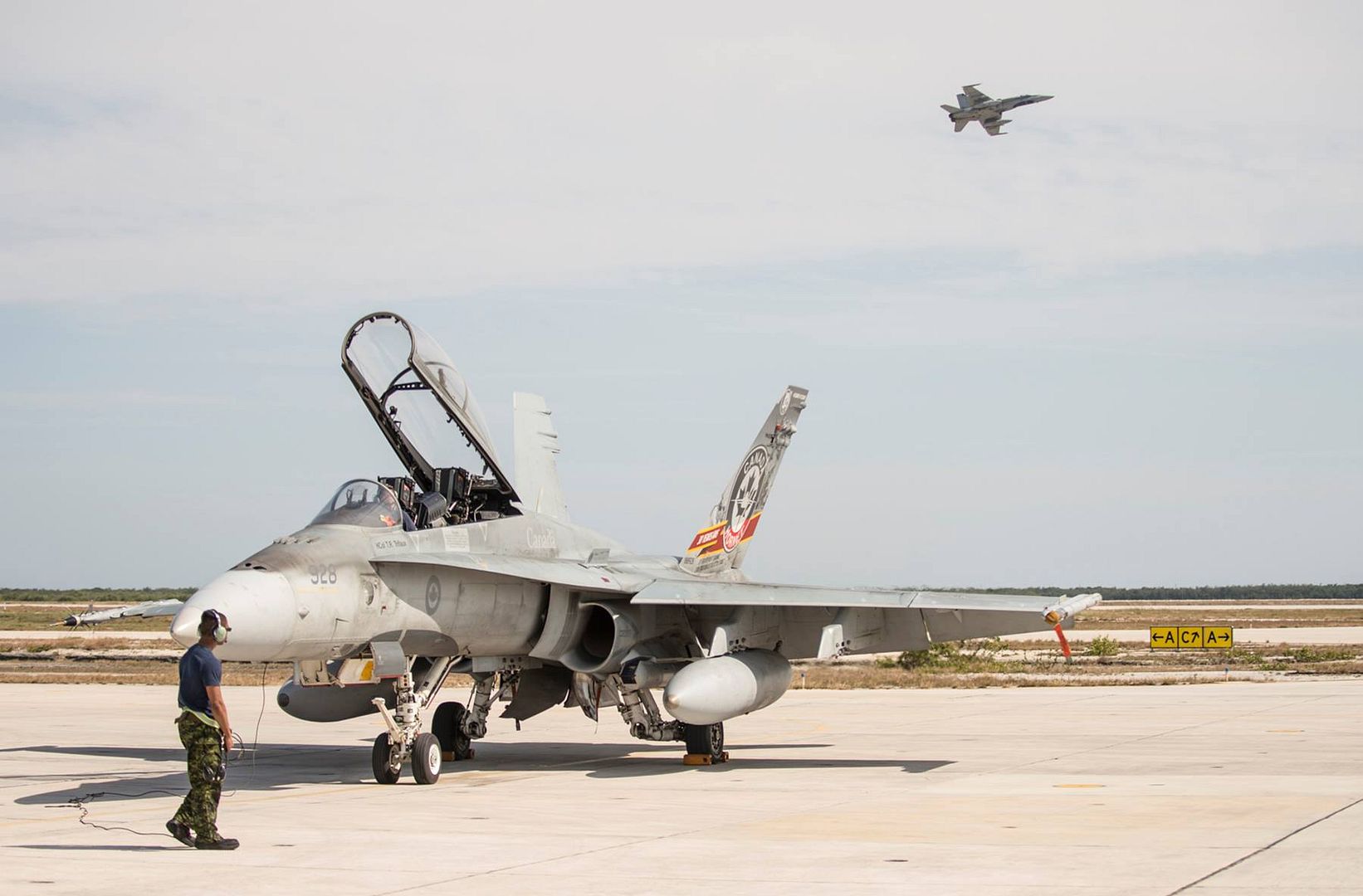
SEATTLE, March 15, 2016 /PRNewswire/ -- Boeing (NYSE: BA) delivered Nok Air's 21st Next-Generation 737-800 during a ceremony at the Seattle Delivery Center. The celebration marked the third direct-purchased 737-800 to be delivered to Nok Air.
"We are extremely pleased to welcome another new 737-800 to our growing all-Boeing fleet," said Patee Sarasin, CEO of Nok Air. "The 737 provides us with the efficiency and reliability that is needed to succeed in today's competitive environment. This airplane will continue to form the backbone of our fleet and we look forward to providing our customers with the best flying experience onboard our new airplanes."
Boeing Flight Services pilots flew Nok Air's newest 737 to Bangkok and kicked off a world-class flight training program with the airline to help strengthen the capabilities of Nok Air's rapidly expanding flight crew.
"Boeing's high quality flight training program will continue to help us grow our flight crew as we look to meet the ever raising demands with the most outstanding team members," said Sarasin. "Our passengers deserve to be flown by the best pilots in the world and we are working diligently to see that our quality is excellent as our operations continue to expand."
Boeing Flight Services provides integrated offerings to drive optimized performance, efficiency and safety through advanced flight, maintenance and cabin safety training as well as simulator support and services through a global network of campuses on six continents.
According to the 2015 Boeing Pilot & Technician Outlook, an industry forecast of aviation personnel demand closely tied to projections for new airplane deliveries around the globe, 226,000 new commercial airline pilots and 238,000 new technicians will be needed in the Asia-Pacific region through 2034.
"There is a growing demand for well-trained pilots in Thailand, and we look forward to working with Nok Air as they continue to expand their operations in the busy Asia-Pacific region" said Steve Taylor, Chief Pilot, Boeing Flight Services.
Asia leads the world for demand of new commercial airplane deliveries over the next 20 years. By 2034, 14,330 new airplanes worth $2.2 trillion will be needed in the region, according to Boeing's 2015 Current Market Outlook.
-
 Main AdminPALMDALE, Calif., Mar. 16, 2015 ? Lockheed Martin (NYSE: LMT) and the U.S. Air Force Research Laboratory were presented a 2016 Aviation Week Laureate Award for the development and flight testing of the Automated Air Collision Avoidance System (Auto ACAS). Aviation Week presented the award during a March 3 event in Washington, D.C.
Main AdminPALMDALE, Calif., Mar. 16, 2015 ? Lockheed Martin (NYSE: LMT) and the U.S. Air Force Research Laboratory were presented a 2016 Aviation Week Laureate Award for the development and flight testing of the Automated Air Collision Avoidance System (Auto ACAS). Aviation Week presented the award during a March 3 event in Washington, D.C.
The Auto ACAS predicts collisions and automatically maneuvers fighter aircraft at the last instant to prevent imminent mid-air collisions in the highly dynamic Air Combat Maneuvering training environment. Once integrated with the currently fielded Automatic Ground Collision Avoidance System (Auto GCAS), the integrated system will prevent the two leading causes of fighter aircraft losses: controlled flight into terrain and midair collisions. The Office of the Secretary of Defense estimates this system will save a total of 34 aircraft and 25 pilot lives, with a cost savings of $2.3 billion through 2030.
?I cannot say enough about the combined U.S. government-Lockheed Martin team that pushed the extremes of flight safety to fully develop and validate this revolutionary flight safety system,? said Ed Griffin, Senior Program Manager at Lockheed Martin?s Skunk Works?. ?Thanks to the team?s innovative approach, the system provides nuisance free operation without interfering with routine combat training tactics or normal pilot operations.?
The Auto ACAS was developed jointly by Lockheed Martin?s Skunk Works?, in collaboration with the Office of the Under Secretary of Defense Personnel & Readiness, the Air Force Research Laboratory, NASA's Armstrong Flight Research Center, and the Air Force Test Center.
Aviation Week?s annual Laureate Awards recognize the extraordinary achievements of individuals and teams in aviation, aerospace, and defense. These accomplishments embody the spirit of exploration, innovation and vision that inspire others to strive for progress, change and leadership.
A U.S. Air Force F-16D used for Automatic Air Collision Avoidance Technology testing. Photo: Lockheed Martin/Chad Bellay
Post a reply
- Go to Previous topic
- Go to Next topic
- Go to Welcome
- Go to Introduce Yourself
- Go to General Discussion
- Go to Screenshots, Images and Videos
- Go to Off topic
- Go to Works in Progress
- Go to Skinning Tips / Tutorials
- Go to Skin Requests
- Go to IJAAF Library
- Go to Luftwaffe Library
- Go to RAF Library
- Go to USAAF / USN Library
- Go to Misc Library
- Go to The Ops Room
- Go to Made in Germany
- Go to Campaigns and Missions
- Go to Works in Progress
- Go to Juri's Air-Raid Shelter
- Go to Campaigns and Missions
- Go to Works in Progress
- Go to Skinpacks
- Go to External Projects Discussion
- Go to Books & Resources
